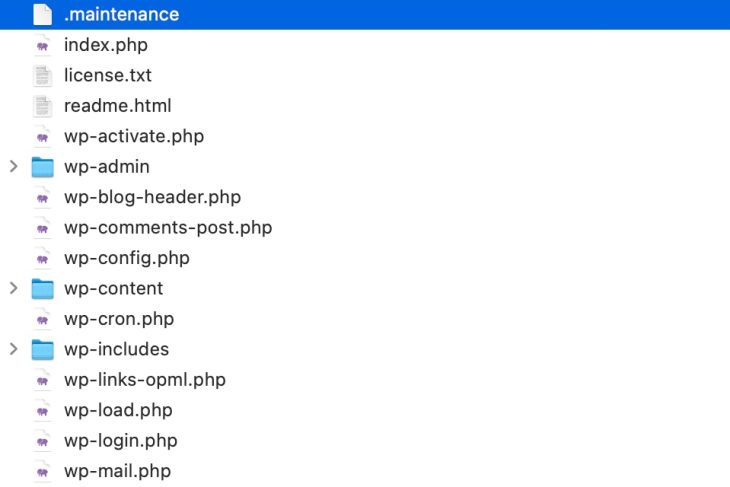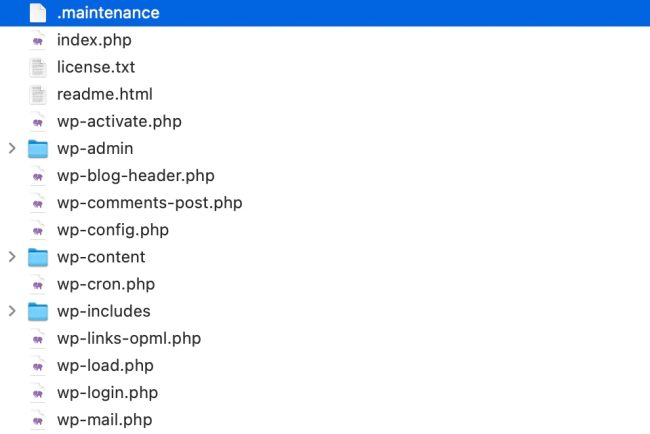
How A Bottom-Up Design Approach Enhances Site Accessibility
How A Bottom-Up Design Approach Enhances Site Accessibility How A Bottom-Up Design Approach Enhances Site Accessibility Eleanor Hecks 2024-10-04T09:00:00+00:00 2025-03-04T21:34:45+00:00 Accessibility is key in modern web design. A site that doesn’t consider how its user experience may differ for various audiences — especially those with […]
Ux
Embracing Introversion In UX
Embracing Introversion In UX Embracing Introversion In UX Victor Yocco 2024-09-19T15:00:00+00:00 2025-03-04T21:34:45+00:00 I place myself firmly in the category of being an introvert when it comes to my role as a UX researcher. I love the process of planning and executing research. I have never […]
Ux
How To Build Custom Data Visualizations Using Luzmo Flex
How To Build Custom Data Visualizations Using Luzmo Flex How To Build Custom Data Visualizations Using Luzmo Flex Paul Scanlon 2024-09-12T11:00:00+00:00 2025-03-04T21:34:45+00:00 This article is sponsored by Luzmo In this article, I’ll introduce you to Luzmo Flex, a new feature from the Luzmo team who […]
Ux
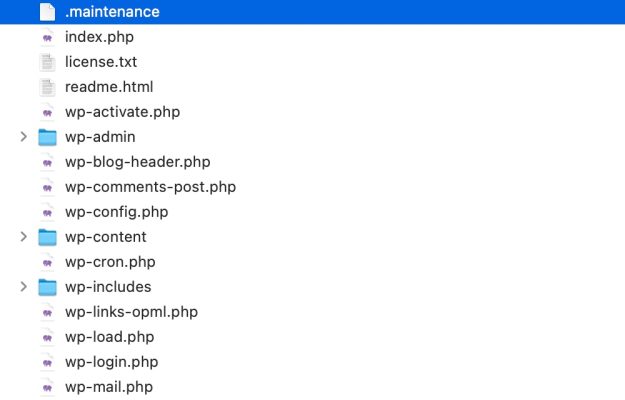



Best Web Development Tools in 2022
In this article, we’ll dive headfirst into the best web development tools available for developers around the world. From desktop development tools, through those available on Linux, to the ones that are meant to program apps for mobile devices. Without further ado, let’s get down […]
BusinessIn this article, we’ll dive headfirst into the best web development tools available for developers around the world. From desktop development tools, through those available on Linux, to the ones that are meant to program apps for mobile devices. Without further ado, let’s get down to business.
Best Web Development Tools
Development tools were created to make the entire process easier and faster, but with so many of them available on the internet, it’s really hard to pick proper ones. Luckily, you don’t have to resort to only one, but instead, you can have a choice of multiple tools. In fact, you can choose as many as you like or need because your web development project is worth it.
Code Editors (IDE)
Webstorm
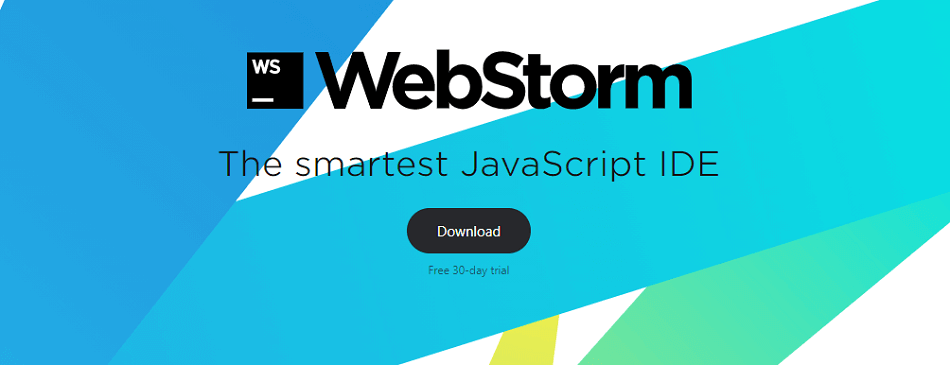
Webstorm, also known as IntelliJ IDEA, is a popular and famous JavaScript IDE text editor that was released two decades ago in 2001. The latest stable release of the software was published on June 1st, 2021.
What makes Webstorm such a popular software are its features. Among many, the developers can find ones like:
- Code completion – the editor analyzes the written code and suggests how it should be completed;
- Plenty of supported programming languages;
- Supports version control software like Git;
- Supports various databases like MySQL, etc.
Though bear in mind that Webstorm isn’t free software. In order to use it, you have to pay $12.90 per month or $129 annually.
JetBrains company doesn’t stop here, as they offer more code editors. It all depends on your needs. Perhaps you need a code editor for PHP? Sure, there’s PHP Storm. You’re working on an application written in Python? Take a look at PyCharm. Maybe you like to program in Ruby? There’s an editor for you also and its name is RubyMine.
Visual Studio Code Editor

Also known as VScode, Visual Studio Code is a popular cross-platform source-code editor created and maintained by Microsoft. The tool incorporates a variety of features such as GIT commands, debugging options, and other useful tools.
Visual Studio Code can be upgraded with a wide choice of free extensions. To do so, you need to browse the marketplace and choose the ones that appeal to you the most. JavaScript and Python support also goes a long way for the app. VScode supports plenty, and we really mean plenty of programming languages for free. Take a look!
All things mentioned above make VScode an ideal text editor for programming your web development projects.
Atom
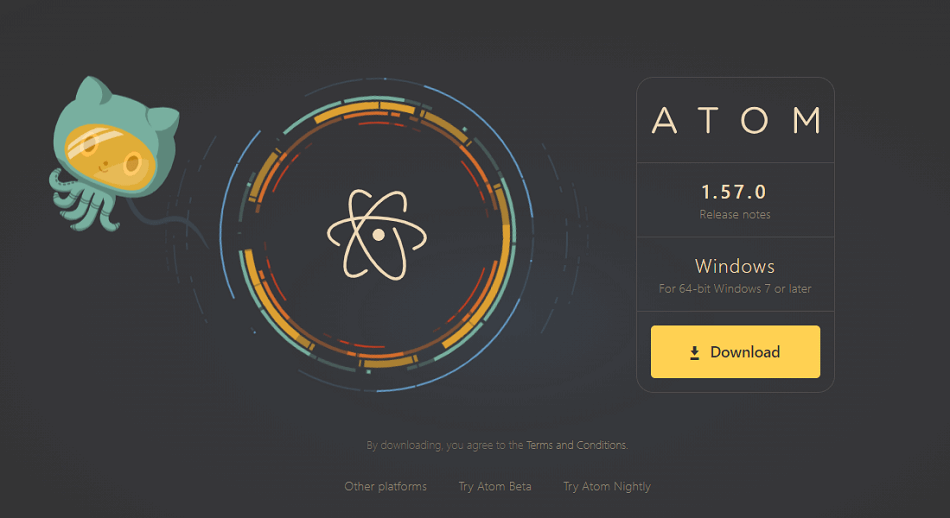
GitHub’s own, Atom is yet another cross-platform code editor on the list. Released in 2014, Atom is based on Electron software and supports many web technologies, such as C and C+, JavaScript, Python, and others. It’s ideal for developing desktop web apps as they can be customized with different APIs, themes, or plugins.
Thanks to being an open source code editor, Atom differs from Sublime Text or Visual Studio Code. In this case, you may wonder, what’s the difference? Well, due to Atom being open source it can feature more extensions and is more flexible in terms of development. And it’s free!
Sublime Text
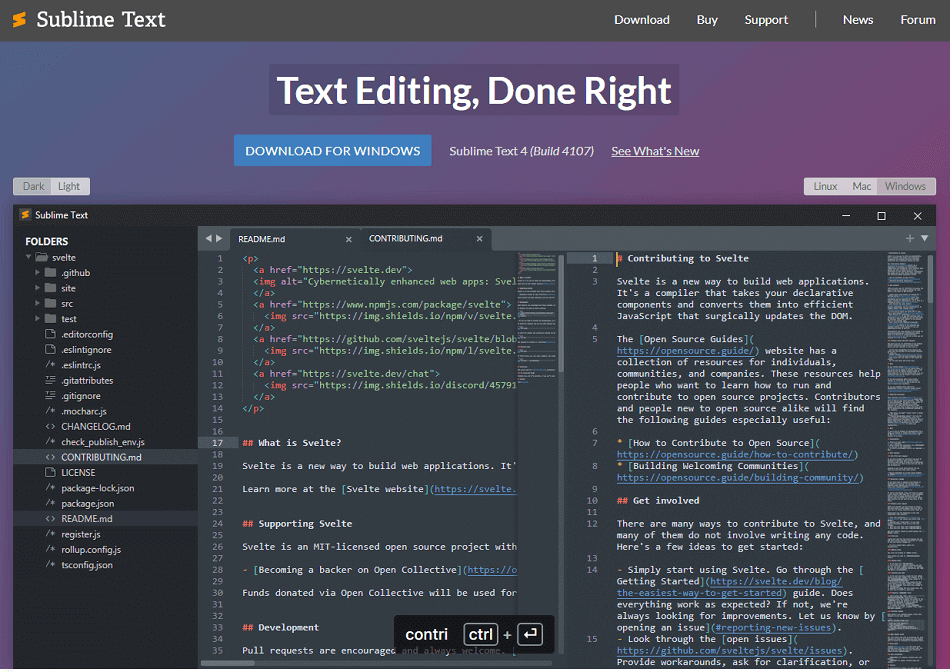
Available for Linux, Windows, and macOS, the cross-platform Sublime Text is one of the best code editors for web development, as it features plenty of interesting and useful functionalities.
Not only that, Sublime Text editor also supports many syntaxes like CSS, PHP, Python, and more. Also, the software allows simultaneous editing, i.e. editing multiple lines of code at the same time.
Since this code editor includes so many features, the best way to visualize them would be to list them:
- Command palette that uses suggestions for quicker writing along with the ability to change syntax;
- Python-based API;
- 23 themes to choose from;
- Goto anything feature for efficient changing of projects.
In fact, 71% of software professionals confirmed using Sublime Text, Atom, or a similar text editor.
Development Tools
Chrome DevTools
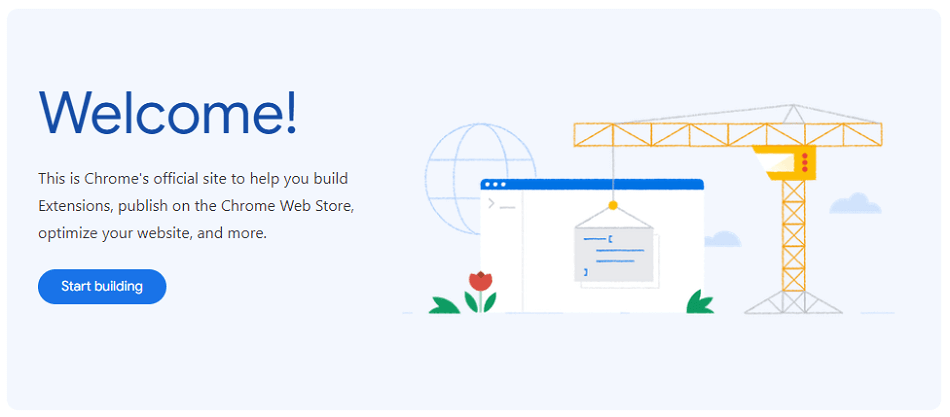
You probably didn’t notice, but you most likely have it already! If you’re using the Google Chrome browser, you can use the Chrome DevTools any time you want. To do so, simply click the Ctrl+Shift+I button configuration.
Working with JavaScript, Chrome Developer Tools is essentially a set of built-in tools for web developers that allows them to change styles of the page through previews, check the technical aspect of any website, or view and change the Document Object Model.
Not only that, the Chrome Developer Tools gives the web developers freedom to do things like changing color palettes and formats, oversee the performance, set JavaScript breakpoints, edit CSS or HTML, and many more!
Here are some examples of the abilities of Chrome DevTools. With it, you can:
- View and edit CSS;
- Edit and view animations;
- Run JavaScript in the console itself;
- Check and view network activity;
- Manage cookies;
- Manage local storage;
- Simulate mobile devices;
- Debug JavaScript;
- Make the website faster by optimizing it;
- And many more.
Firefox Developer Edition
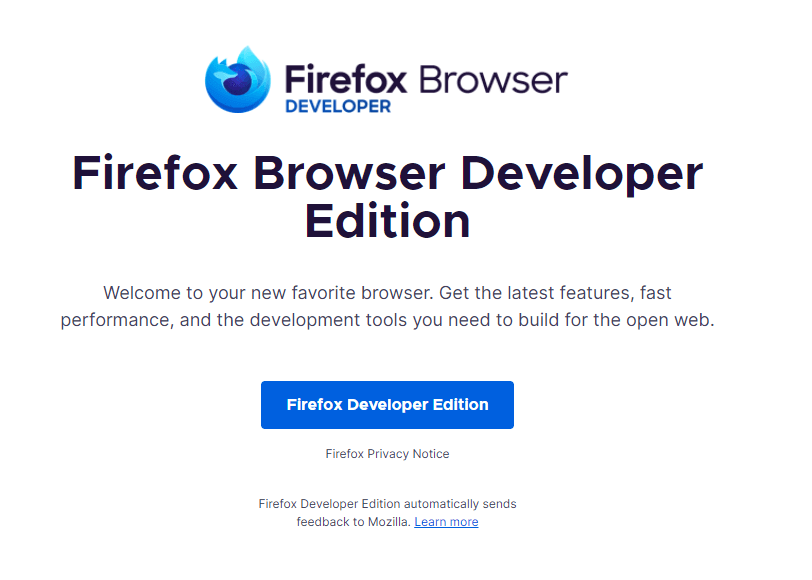
For all those who aren’t fans of Google Chrome, Firefox comes to the rescue. A direct competition of Chrome DevTools, Firefox Developer Edition is a web development tool that serves a similar purpose.
Including features such as WebSocket Inspector or Multi-Line Console Editor, Firefox’s alternative browser is ideal for people who wish to use a different web development tool.
CSS Preprocessors
Sass

Before getting into details of Sass, let’s briefly mention what a CSS preprocessor is. It’s software for generating CSS from the syntax of a preprocessor. Additionally, they can help the developer write the application faster.
Developed in 2006, Sass is the most popular CSS extension language. Being an easy-to-use frontend development tool, Sass can be used with all CSS libraries. It includes features such as nesting, mixins, variables, or selector inheritance.
Sass has been supported for over a decade, not only by the creators but also by a large community of developers. What’s more, some technologies have even been created with Sass, like Bourbon or Compass.
Less
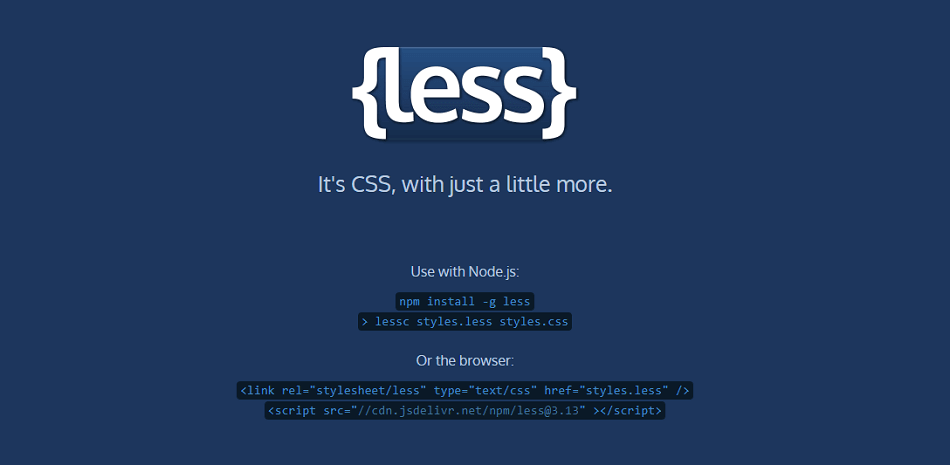
Similarly to Sass, Less (Leaner Style Sheets) is an open source preprocessor that serves the purpose of CSS language extension. It can run on both the backend and frontend.
With its release over a decade ago in 2009, Less has since become a rival to Sass, even though they both influenced each other in some ways. The extension can attribute its popularity to various functionalities like nesting, mixins, variables, and more.
What differentiates Less from Sass among many other things is that it runs its compiler via browser by using less.js.
PaaS – Platform as a Service
Docker
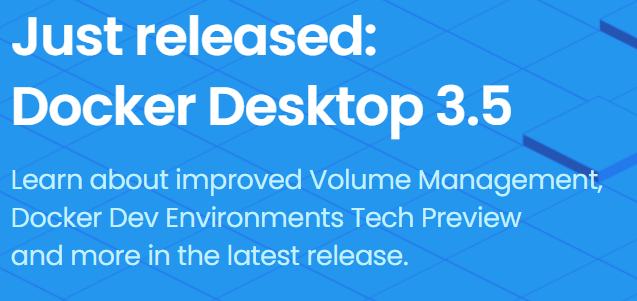
Docker is an open source web development tool that serves the purpose of containerization of software. All containers are lightweight and have a common ground that’s called the operating system kernel. What’s worth mentioning is that Docker uses less resources compared to virtual machines.
Docker supports only three main operating systems, i.e. Windows, Linux, and macOS. Additionally, the software works with Github!
In fact, the software is an industry standard that enables zero-downtime deployment.
Git Software
Git
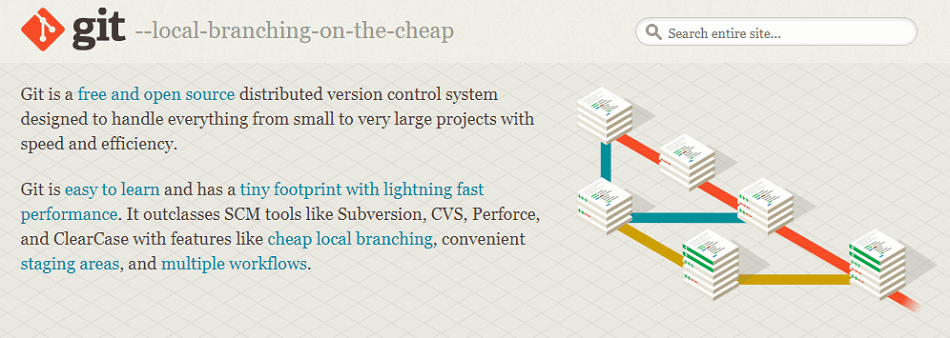
Git is a free version control software used for saving, editing, storing, or deleting any part of the code. Ideal for web developers to save their code documentation in so-called repositories. Then, web developers can view and store their repositories in software such as Github.
GitLab

Created by Dmytro Zaporozhets and Valery Sizov, GitLab is a DevOps lifecycle tool that works as a Git repository. Not only that, but it also includes plenty of other functionalities like a wiki, tracking issues, and many more.
Written in Ruby and Go, GitLab is a web-based software that can help developers with their projects.
GitHub

Probably everyone has heard about GitHub at some point, even those who aren’t familiar with the IT industry. GitHub is a platform used by over 50 million users and it serves the purpose of storing open-source software.
In the past, GitHub used to charge its users for storing projects, but since Microsoft bought GitHub in 2018 for the jaw-dropping amount of $7.5 billion USD, the projects can be stored free of charge.
Additionally to storing personal projects, you can also code web apps on the platform. Unfortunately, I’m afraid that for those who aren’t fans of the cloud, I’ve got some bad news. GitHub stores all information in the cloud.
Bitbucket
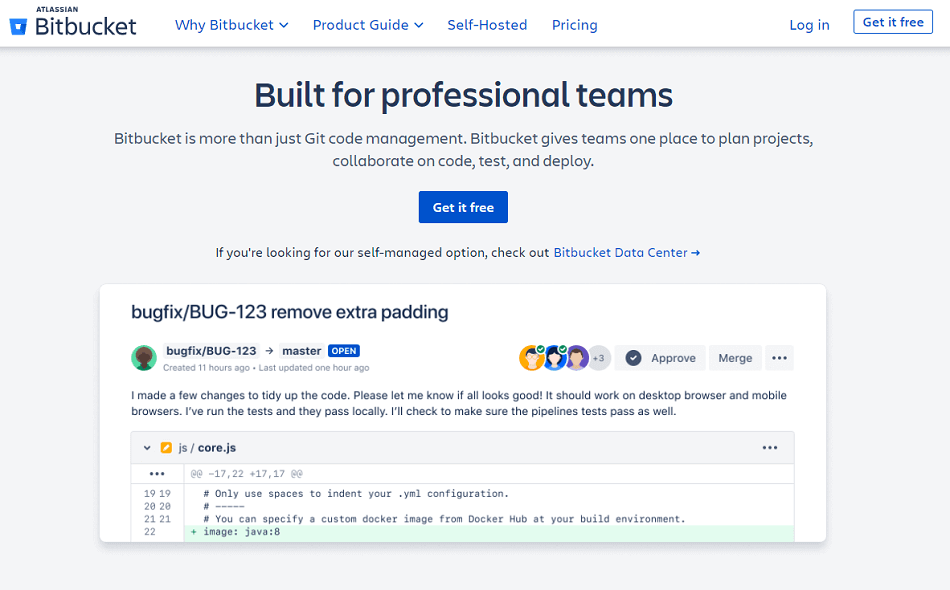
Made by Atlassian, Bitbucket is yet another Git-based storage for open source repositories. Written in Python, it’s available in both free and premium versions.
The storage features a lot of useful functionalities, among them users can find ones like integration with Jira or Trello, or built-in CI/CD.
What’s more, with the premium version you can set up the two-step verification to further secure your account, or set IPs that you would like to have whitelisted.
CI/CD Tools
Github Actions

A part of the entire Github, Github Actions is designed to be responsible for the automation of the software workflow with CI/CD (Continuous Integration/Continuous Deployment).
With support for matrix builds, different platforms, and a multitude of programming languages, Github Actions can connect every tool that you’re using to automate the process.
Not only that, the software features a plethora of available plugins that can help you with a variety of actions.
Bitbucket Pipelines
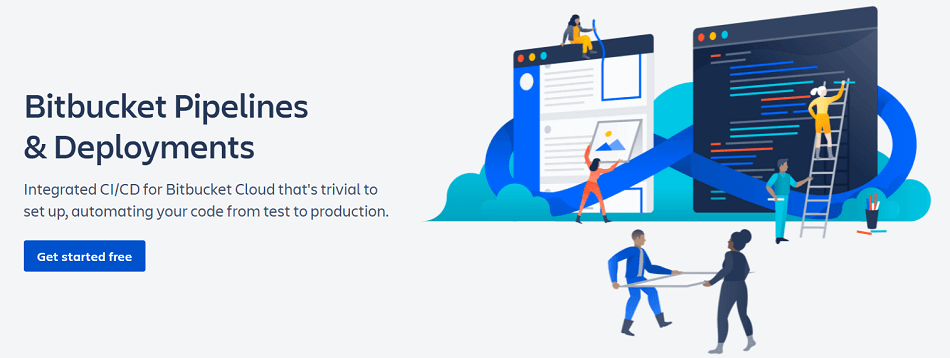
We already mentioned Bitbucket on our list, but the Bitbucket Pipelines are worth mentioning as well. It’s an integral part of the Bitbucket that’s responsible for handling CI/CD service.
Thanks to this feature, the user can build, test, or release the code automatically based on the repository’s configuration file.
Bitbucket Pipelines supports a wide range of platforms, for example, Python, Ruby, Java and JavaScript, PHP, and even more.
Jenkins Pipelines
Jenkins Pipelines is a set of plugins that serves the purpose of both implementing and integrating CD pipelines into the Jenkins program.
The software works based on the Jenkinsfile. When the user allocates it to source control, a range of benefits comes soon after, like automatic creation of a Pipeline build process with branches and pull requests, ability to review or iterate the code, and others.
Why should anyone use Jenkins Pipelines? Well, because it has a couple of advantages, like being durable or versatile. And these are not the only ones! Go ahead and see for yourself.
Project Management Tools and Communicators
Jira
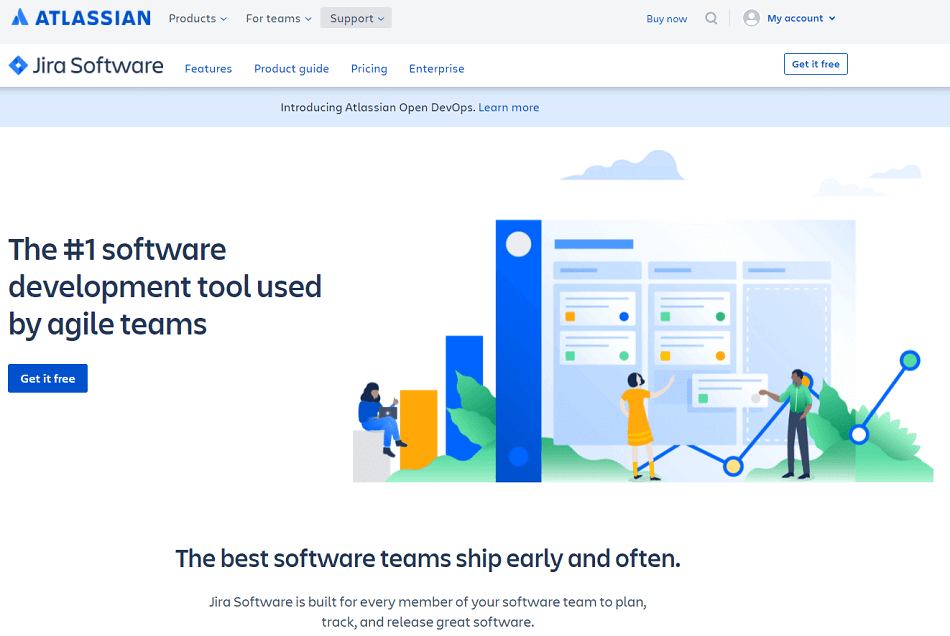
One of the most used project management tools across software development companies, Jira allows the users to track the progress and plan the sprints. If you’re using the Agile/Scrum methodology, Jira is the perfect web application for it. It’s cross-platform software with a variety of options at your disposal, like Kanban boards to efficiently manage the tasks and prepare the sprints.

As you can see in the image above, Jira offers various subscription plans. Even the free plan would be enough for small teams who wish to track their progress throughout the project.
Asana
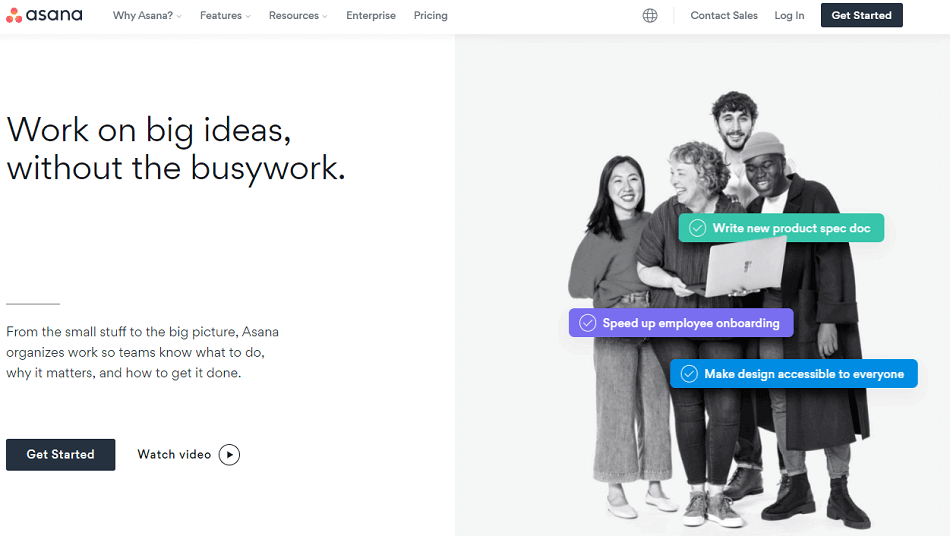
Similarly to Jira, Asana serves the purpose of a project management tool. There, the user can create new tasks and assign team members to them, create subtasks, or organize lists, and we just named a few.
Asana is a fine example of SaaS – Software as a Service with different subscription plans available. You can even register on Asana for free if you’re just starting a small project with your team. Prices grow accordingly to the needs, for example, if it’s a bigger project or an enterprise.
Trello
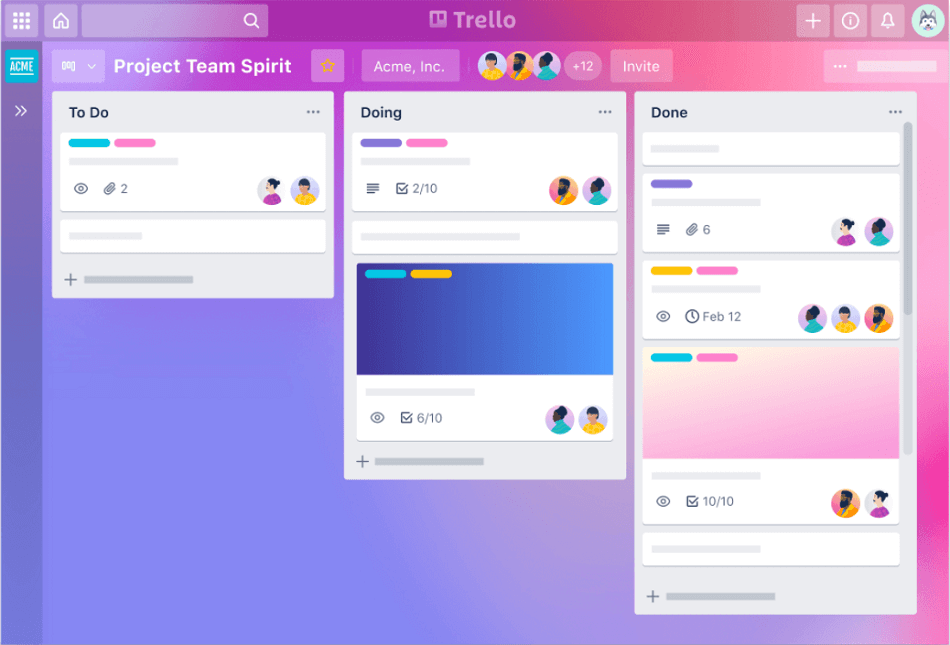
Trello is a very popular choice when it comes to project management tools as it’s both simple and efficient. With Trello, users can manage their own projects by creating columns and cards. Similarly to Asana, they can be grouped together in columns such as To Do, Done, etc.
Trello marked its initial release in 2011, making it a decade-year-old software that is still widely used to this day. It’s available in 21 languages and has over 50 million users.
There are three pricing options available for Trello: $0 (free version), $10 per month (billed annually, $12.50 billed monthly), and the last option depends on the number of users, but generally, it’s $17.50 per one user.
Surprisingly, the free version of Trello can still go a long way. Let’s take a look at the comparison. You can see the free version on the left, business class in the middle, and enterprise version on the right.
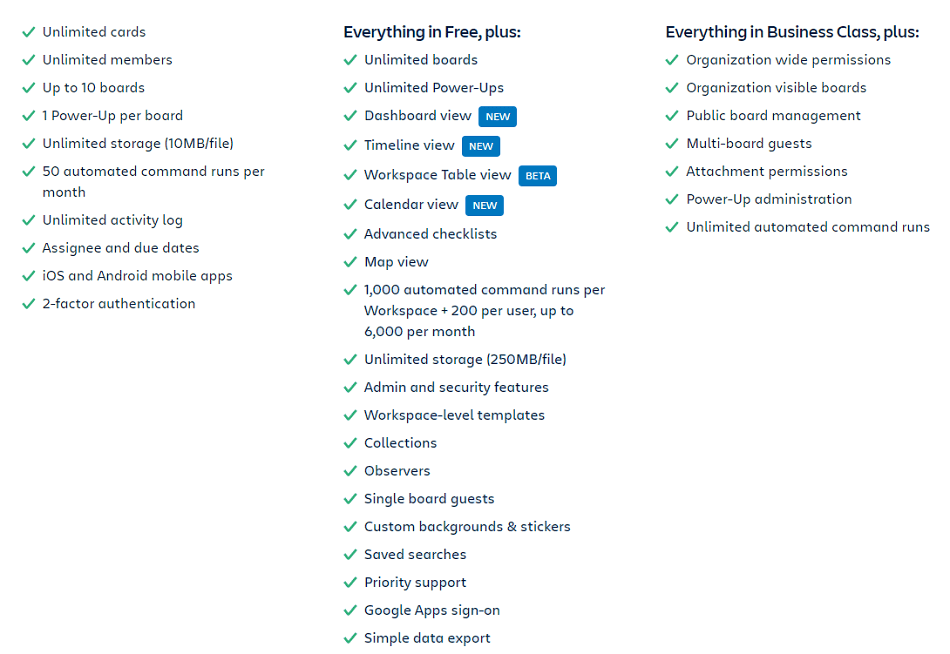
Additionally, Trello can be integrated with a variety of other tools, like Slack, DropBox, and many more.
Slack

Released in 2013, Slack has quickly become a communicator often used by web development companies. It features a friendly GUI (Graphical User Interface) and a structure that can be divided into channels or rooms. Not only that, but you can also make video calls, integrate it with multiple software, and many more.
The application is available on a variety of platforms, like Windows, Linux, macOS, iOS, Android, or Windows Phone. It’s a really versatile tool for communication and it seems that it’ll only keep delivering.
Even though Slack is a great tool, it’s also rivaled by open source MatterMost. Which one is better? You decide.
Zoom

Zoom is yet another really popular communication tool. When it comes to video conferencing, here is your undisputed champion. Whether you’re working from home or perhaps you need to meet with a client, Zoom comes to the rescue.
Of course, there are plenty of other ways to do so, but using Zoom can not only make it more professional but can also handle higher traffic as up to 100 people can join a conference for free!
Zoom features different subscription options starting from $0 per year up to $240. Bear in mind that the free option can only host conferences or meetings for up to 40 minutes which isn’t a long time. By the way, if you’re interested in online meetings, consider also Zoom alternatives to choose the best match for your online conferences and meetings.
Backlog
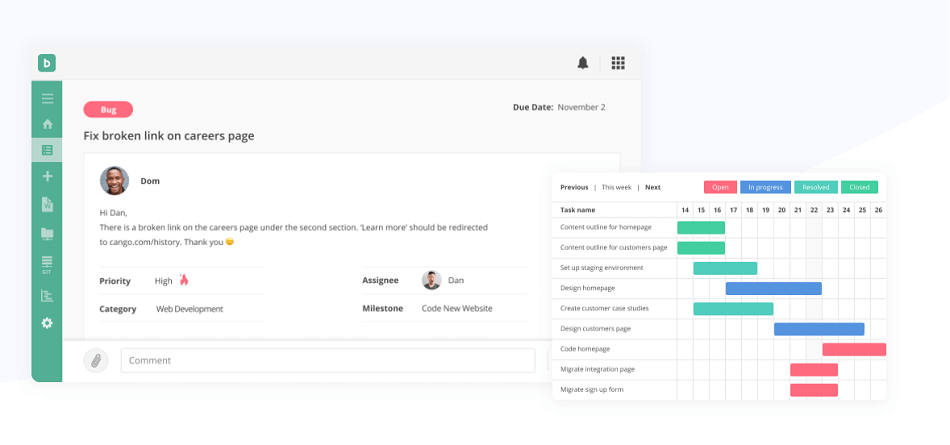
If you’re tired of Jira or perhaps want a change of environment, you can easily switch to Backlog as it includes an easy-to-use Jira importer.
The tool is available in various pricing models, ranging from $0 for a free version that includes 10 slots for developers, 1 project, and 100MB of storage, to $175 per month! The latter is the most expensive option of Backlog, but it includes unlimited slots for developers or projects. Not only that, but it also has 100GB of storage, as well as Gantt charts and custom fields.
With Backlog, developers can manage their projects in an easy and efficient way. Thanks to multiple tools like task hierarchy, IP address control, or Gantt charts, Backlog has become a quite popular solution.
Package Managers
Node Package Manager
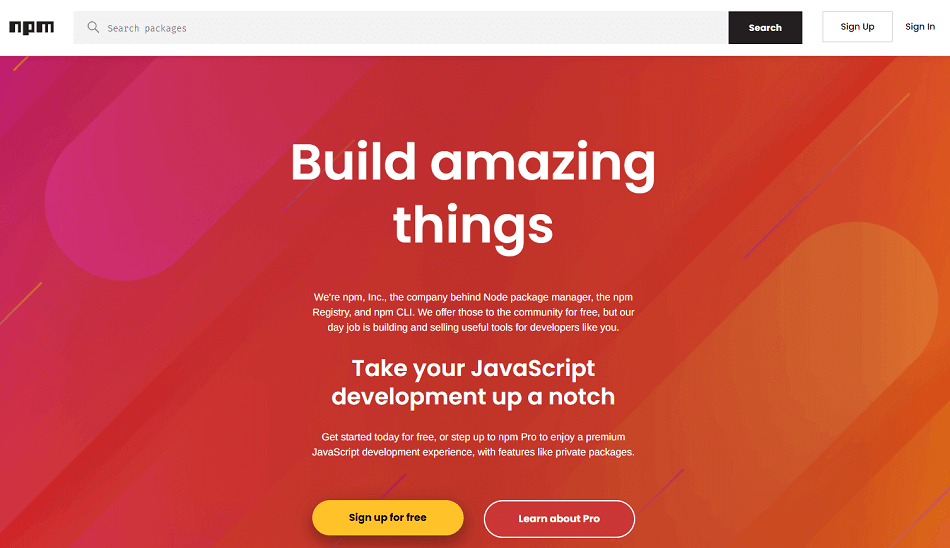
Developed by Microsoft, the Node Package Manager is a JavaScript-based web development tool for finding and installing packages for specific programming languages.
It not only makes the search for the proper package quicker but also easier as you can install it from the manager itself. That all makes the software perfect for use as your default package manager.
Yarn

Yet another manager that serves the purpose of downloading and installing packages. Yarn has been created by Facebook and received a new stable version in January of 2020, called Yarn 2. Interestingly enough, Yarn can also be used as a project manager.
What the users appreciate the most about Yarn is its speed, security, and performance.
Composer

Being the third package manager on the list, Composer is widely used among developers around the world. Written in PHP programming language, Composer runs in the command line while installing the so-called dependencies, which are essentially libraries.
Composer was released in 2012, making it yet another almost a decade-old software. What’s worth noting is that Postman was heavily inspired by another package manager mentioned on this list – NPM.
API Tools
Postman
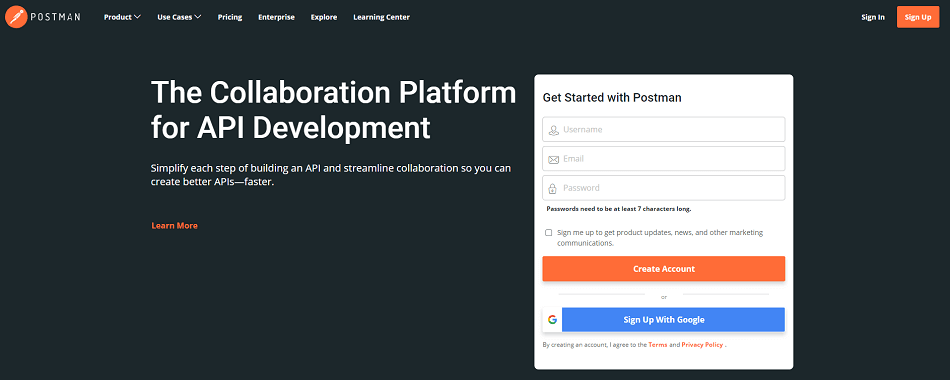
You’ve got mail! Though it will not deliver letters, Postman is a collaboration platform for API development (Application Programming Interface). There are various ways in which you can use the software, for example, using it directly in your web development or you can even create onboarding for new developers.
The Postman web application can also conduct automated tests and simulate endpoints.
Swagger
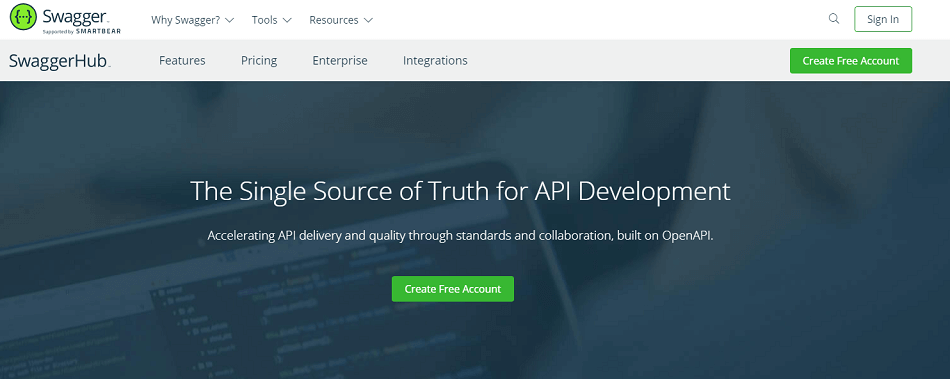
Swagger is an open source development tool, an API builder, and a tester that was released a decade ago, in 2011. Additionally, the tool allows developers to create testing APIs and makes the frontend development easier, even before releasing the first API.
What’s more, Swagger is a tool that’s easy to understand even for rookies. Additionally, it can be easily adjusted and features a nice and crisp editor.
Frontend and Backend Web Frameworks
Web development frameworks are also considered tools so it wouldn’t be right not to mention that. We’re not going to dive into details in this article, as we already covered the subject of the frameworks on our blog.
However, what we’ll mention here are some of the frameworks that are worth taking into consideration while developing web applications:
- Node.js;
- Express;
- React library;
- Foundation;
- jQuery JavaScript library;
- Angular;
- Svelte;
- Laravel;
- Vue.
Quality Assurance Tools
BrowserStack
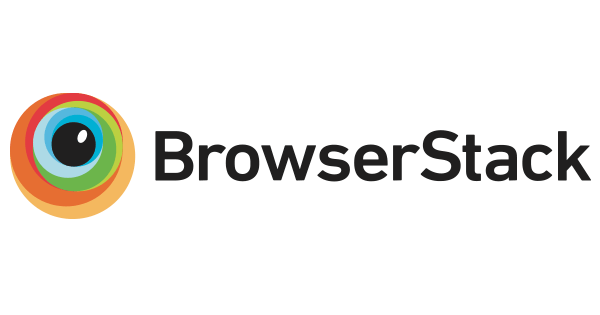
Founded in 2011 in India, BrowserStack is a testing platform for both mobile applications and websites, all done in the cloud.
For testing, developers can use browsers and operating systems of their choice, along with real mobile devices. What’s more, you don’t have to possess a multitude of devices to test the software on, because you can conduct the tests on virtual phones, operating systems, etc.
With over 2,000,000 registered developers from at least 135 countries, BrowserStack is a key player when it comes to testing applications.
Selenium

Selenium is an open source automated tool for conducting tests of web applications. Created in 2004 with a stable release in 2018, this testing tool allows the users to write test scripts in various programming languages, such as Node.js, Python, and many others.
Selenium is actually one the most popular testing tools on the market with over 50,000 companies using the software.
Other
Webpack
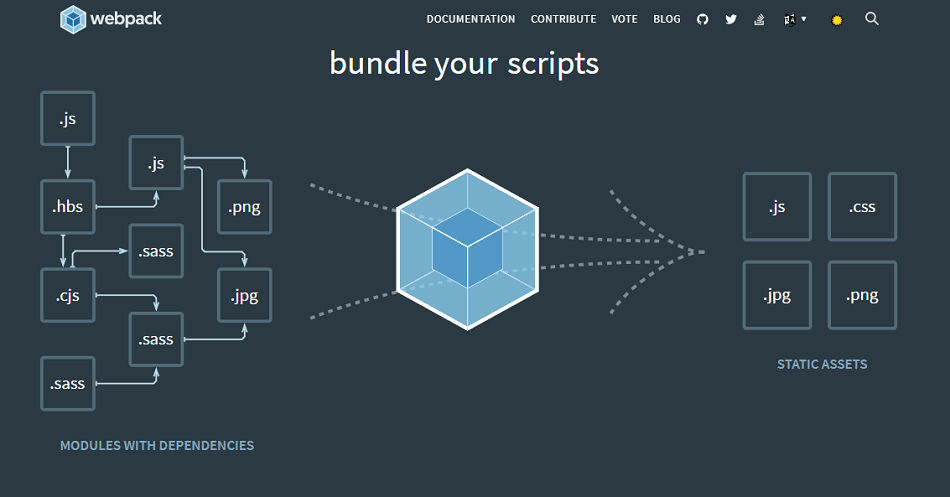
To put it in simple words, Webpack is a static module bundler designed for working with JavaScript apps. With Webpack the user can bundle the scripts, pictures, and many other things.
What the software essentially does is create dependency graphs between the files, resulting in the creation of bundles
ESLint

ESLint is a linter software made for JavaScript. Since its release in 2013, ESLint has been a popular tool for developers programming in JavaScript.
With the help of plugins, the linter can also work with TypeScript or JSX. Additionally, the tool can work across multiple platforms.
Grunt

With over 5000 plugins available, Grunt is a versatile and popular JavaScript task runner. Used by companies like Microsoft, Twitter, Opera, and others, this software can perform tasks like testing, compiling, minificating, or linting.
The tool features a functionality called Gruntfiles. What it essentially is is a file with a defined task that is run in the command-line interface.
Autoprefixer
Autoprefixer is a post CSS processor that is designed to remove vendor prefixes. In fact, you can entirely skip the prefix thing, whether to add it or remove it, as Autoprefixer will take care of everything.
Additionally, you can choose which browser you want to be supported.
Husky
Husky is a really popular package developed to work with Git hooks, that can also lint code or commit messages, and run tests.
Designed to be lightweight, it’s powered by core.hooksPath Git feature. Any project that includes the package.json file can use Husky.
Stylelint
Stylelint is a popular tool for CSS that helps developers write clear and understandable code. It’s a linter that can find and report errors and issues.
It can definitely contribute to faster development and clearer code. Featuring over 170 built-in rules, plugin support, and a constantly growing community, Stylelint can be a really useful tool.
TypeScript
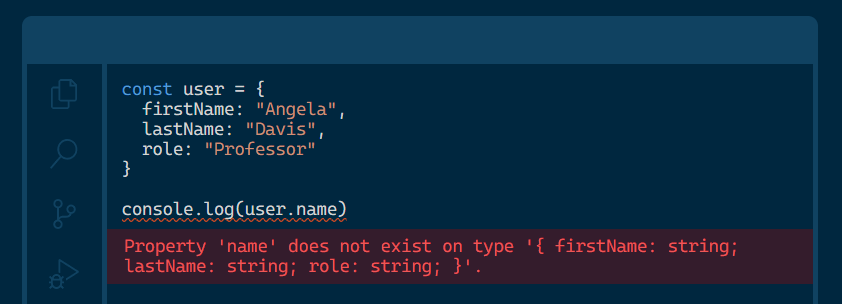
Based on JavaScript, TypeScript is an open source language used for programming a wide range of applications.
TypeScript is like a direct descendant of JavaScript, with additional features like static type definitions.
Additionally, many companies decided to migrate their applications from JavaScript to TypeScript, for example, the already mentioned Slack or Airbnb.
To get to know more, check out the presentation made by Anders Hejlsberg upon TypeScript’s release.
Web Development Tools for Linux
Most of the web development tools are not only available for Windows, but also for Linux and other operating systems. All of the ones that we’ve listed in the article are available on that platform.
Well, all but one – partially. Asana’s desktop version is not available on Linux. The only way to access it on the platform would be to use the browser version.
Mobile Web Development Tools
So far we’ve listed web development tools for a variety of platforms like Windows or Linux. Now, let’s focus briefly on the mobile web development tools. Of course, some of them are cross-platform, like Slack or Zoom, therefore we’ll skip the ones we already described above.
Android Apps
Android Studio

Android Studio is the most popular IDE tool for creating apps for Google’s mobile system – Android. It has been built by the IntelliJ IDEA that we already mentioned in the article.
Available for platforms such as Windows, Linux, or macOS, the software features functionalities like Android Virtual Device (that acts as an emulator for running and debugging the apps), an intelligent code editor, APK Analyzer, lint tools, refactoring and fixes, a layout editor with vast options, and many more!
With Android Studio, developers can code applications in various languages. Some of them would be Java or C++. Additionally, the software supports extensions like Go or Kotlin.
Overall, it’s a great tool for creating Android apps.
Charles Proxy

Created by Karl von Randow, Charles Proxy is a cross-platform debugging tool that allows the user to view HTTP, HTTP/2, SSL, HTTPS traffic.
Released 19 years ago in 2002, Charles Proxy features plenty of functionalities. Among them, the user can find ones like XML/JSON/SOAP interpretation, bandwidth throttling, different sorts of debugging features, and a lot more.
Charles is a paid software that costs $50 for one license. However, you may try the software for 30 days before purchasing and see if it suits your needs.
Xcode
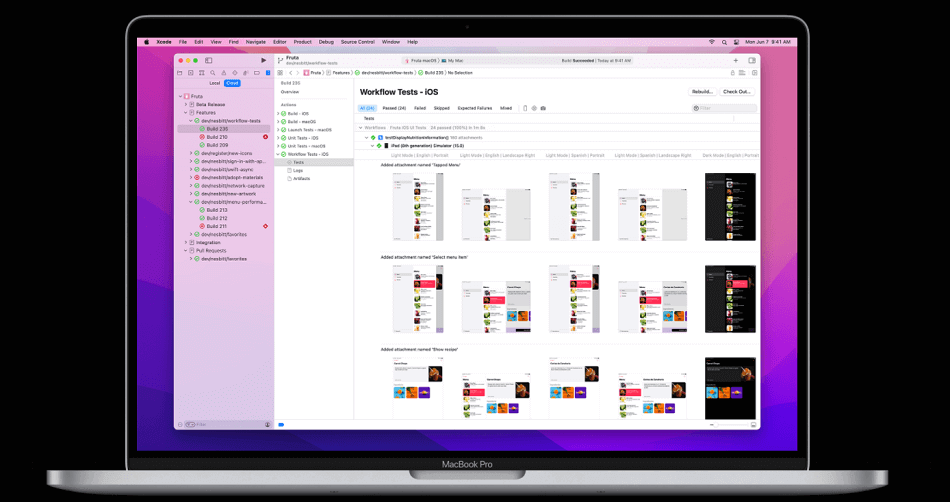
The last entry on our list of web development tools is Xcode. Made by Apple, Xcode is an IDE for macOS and is used for developing applications for Apple platforms, such as the mentioned macOS, iOS, watchOS, tvOS, and last but not least iPadOS.
With Xcode, developers can not only program applications, but also manage the workflow, create new requests, manage the queue, and more. Additional features include the CarPlay simulator, custom documentation, crash reports, Vim mode, and other useful features.
A really well-made tool that happens to be the most popular choice when it comes to developing iOS tools.
Key Takeaways
Almost there! Just one more stop on the road and we’re done! As you’ve seen in the article, we listed some of the most popular web development tools that developers can use during their work.
For your convenience, let’s go through these few bullet points to solidify the knowledge:
- When choosing a tool, think about your end goal, is it a big project? Or perhaps it requires only a small team?
- Think about your budget, if you don’t want to spend too much money, choose a tool that’s free or has a free trial;
- Carefully choose the tools that appeal to you and your project the most.
Conclusions
This is the end, as Adele would sing. In all seriousness though, now you should be able to tell which tool can help you with the development process.
Additionally, if you had any doubts about web development tools, we hope that they have vanished by now! Thank you and see you around next time.

Web Development vs. Web Design: Unveiling The Difference
Does the difference between web development vs web design confuse you? Did you try to get your mind around the various roles and responsibilities of both parties, but found yourself in a ‘chicken and egg’ kind of situation? MPC is coming to the rescue! In this article, […]
BusinessDoes the difference between web development vs web design confuse you? Did you try to get your mind around the various roles and responsibilities of both parties, but found yourself in a ‘chicken and egg’ kind of situation? MPC is coming to the rescue!
In this article, I’ll define the roles of a web developer and a web designer, compare their daily responsibilities and tasks inside a web development process and take a look at the resources and tools they use. This short guide will help you understand the difference between web design and development.
Web Designer vs Web Developer: Is There Even a Difference?!
Both web designers and web developers build websites, so what’s the fuss? Well, the contrast lies in the range of responsibilities and skills of these roles. In a pinch, a web designer is what a fashion designer is for a brand like Chanel, while a web developer is a seamstress. They do different jobs, but the outcome of both heavily depends on and influences the other. And while these people tend to claim they ‘can’t stand’ the other party, in fact they can’t live without each other.
Before I go into details, let me say that some web designers have coding skills as well, and some web developers are skilled in design too. Sometimes, people experienced in both of these roles are called ‘devsigners’ – this term is heavily connected to WordPress development. I won’t go into details here, but let’s just say that a WordPress designer/developer ‘unicorn’ will rely on this CMS and its possibilities; other devsigners may specialize in an even simpler website builder like Wix.
Web Designers: The Visual Aspect Of a Website
A web designer is responsible for the visual elements of the website, but not for making it all work in the end. Most often, web designers create things like a user interface (which is an entire website layout) and graphic design (frequently in the form of wireframes and clickable prototypes) that’s later translated into code. They’re also responsible for choosing color palettes, typography, illustrations, and the overall feeling of the website.
What’s more, visual designers are often engaged in the analysis part of the project, utilizing tools that help them understand the end users’ needs, behaviors, and preferences. They may run user tests and UX analysis to identify problem points in existing designs, and later use the results and their own experience to provide optimal solutions for the new website.
Workshops & Wireframes
In most software development models, the design process forgoes the website development phase, as it’s easier to present & discuss with the stakeholders and get their feedback. This reduces the risk of time and resources being wasted on developing UI elements that won’t make it to the final line.

As web designers tend to have soft skill sets, they usually team up with Project Managers and Solution Architects to run product workshops (however, in most cases, these are attended by both web designers and web developers) for software development outsourcing processes. During these, a variety of tools and techniques are used to achieve a consensus in terms of the end product’s visuals and features. Mood boards, style tiles, storyboards, collages, and wireframes may be used to illustrate the concepts and the general feel of the new website.
Workshops develop the initial idea of a product, set out a roadmap for future development, and give a solid foundation for web designers and web developers to work on. The outcome of this process will include the scope of features required for the product, wireframes, user flows, user stories, color schemes, fonts, and graphic elements.
A web designer may also use their creative juices to create information flow for the end product or, if need be, conceptualize the entire branding of a product or a client’s company. They can design a multitude of products including a website design, a mobile app, native & hybrid apps, e-Commerce websites, marketing design, and more. Regardless of the product, they translate the client’s visions and ideas into an on-screen reality.
Designers in software development can be subdivided into two specialist areas:
UX Designers
The role of a UX designer is heavily connected to skill sets like analytical thinking and knowing how to use data to their advantage. These designers use a handful of tools to understand how users interact with the website: where do they expect to find certain information or links, do they skip specific sections or scroll straight to reach them, do they use buttons and other interactive elements, do they try to click on static elements because they look confusing, etc.

Then, they translate these details into websites that catch the users’ attention, meet their expectations and needs, and make them stay and come back for more. UX designers help you get more money as more and more users feel drawn to the product. Their role is also closely tied to the concept of Information Architecture, which involves planning and organizing the structure of the entire product for optimal usability and great UX.
In a pinch, UX designers work on the end user’s experience with the website, creating different scenarios and steps for using the product.
UI Designers
UI designers are responsible for designing user-friendly layouts that are pleasing to the eye and easy to navigate. They also rewrite business goals to user journeys (simple steps needed to perform a certain interaction with the website, like buying an item from an online shop).
The key differences between them and UX designers really are subtle: UI focuses on the appearance of a product, its aesthetics, and ultimate feel, while UX relies on research, surveys, and data to bring valuable input to the table. However, both roles are crucial for product success, as they focus on different aspects and contribute to the final product in multiple ways.
Other Job Titles & Roles
As you can see, web designers can ‘hide’ under different job titles. The ones I’ve mentioned above are often combined into one role of UX/UI designer (sometimes dubbed as Visual Designer) that has experience and knowledge of both aspects. Other software houses set apart a Product Designer role that involves both robust design experience and business knowledge.
That being said, a web designer of any sorts shouldn’t be confused with a graphic artist. However, this role can be a valuable addition to a design team. They will greatly contribute to any illustration-heavy project, branding challenge, or any other product that requires high-level custom graphics.
Tools & Resources Of a Web Designer
A web designer’s toolbox is a comprehensive set of weapons serving different purposes.
For mere design functions, web designers typically use tools like Adobe Photoshop, Illustrator, Figma, or other graphic design software that enables high-level design of a web application. For ready-made components, they’ll rely on resources like stock photography, graphic assets, font & icon libraries, and color palettes. All these elements come together to create a stunning brand with perfect fonts, making the website visually appealing and engaging for visitors.
Finally, to deliver designs that meet technical specifications, they’ll utilize image optimization and compression tools. Web designers may also use Zeplin, a tool that acts as a middleman between them and the developers, helping to deliver and code the designs more efficiently.
On the other hand, the analytical part of designing websites requires solutions like Hotjar, CrazyEgg, Google Analytics, and Google Optimize to get valuable data.

Most web designers will follow brand websites, newsletters, and other sources of latest website design trends, standards, and best practices. Platforms like Dribbble, Behance, and even Pinterest are great sources of inspiration as well.
Web Designer’s Skills
Let’s skip the obvious design skills like an ‘artsy’ feel, aesthetic sense, color theory, typography, etc. and get into more detail. On top of these, a web designer should have:
- a deep understanding of UX mechanisms,
- a basic analysis skill,
- strong interpersonal skills,
- a variety of presentation and discussion techniques in their sleeve.
While no technical skills are required to work as a web designer, it’s worth having a basic understanding of frameworks and their possibilities. This way, visual aspects of a project can be designed and coded easily, with no time wasted on impossible solutions. However, a web designer should have knowledge of HTML and CSS, as well as an understanding of website design principles, web accessibility standards, and responsive design. They should also be familiar with the guidelines for specific platforms, such as iOS/Android for mobile apps, and their basic components.
Web Developers: The Working Aspect Of a Website
Once the web design is established, web developers get to work. They’re responsible for making the visuals clickable, responsive, and usable (i.e. for making a “sign up” button take the website visitors to the signup form that they can fill in, send, and get registered in a customer database), using the designs as reference points to develop exactly what the stakeholders have agreed upon during the initial phase of the project.
Web developers juggle different programming languages to write code that builds the actual website and its components. On top of that, they’re responsible for maintaining websites: overseeing their functionalities, monitoring the performance, facilitating hosting and server management, and developing & implementing updates. This “small” task is sometimes overlooked, but is in fact crucial, especially for big development projects like SaaS.
Earlier on the project, web developers support web designers in planning and workshop phases. They also establish the local environment for future development, staging environment for testing, and then the production environment (for when the product goes live). They may also benefit from tips on SEO strategies for ecommerce websites, optimizing product pages and enhancing overall user experience, or helping secure forms from spam bots flooding the website, alongside the marketing and SEO teams.

Depending on their skill sets and programming knowledge, developers are usually divided into different roles inside web development.
Front-End Developer
Let’s come back to that fashion designer/seamstress situation. If a web developer is a seamstress for a top-notch business suit brand, then the front-end web developer is responsible for building the visible layer of the suit.
This kind of a web developer works closely with visual designers to turn the wireframes into a functioning website. They ensure smooth and fast user experience to each website visitor, regardless of their device, screen dimensions, and the browser. A seamless browsing is achieved by close collaboration with a quality assurance team who runs thorough compatibility tests for various platforms.
Generally, the front-end developer’s range of tasks is referred to as “client-side development”, as it concerns the aspect of the website that’s visible and usable by the client.
Front-End Development Programming Skills
Front-end developers must know HTML, CSS, and JavaScript. Even though both a developer and a designer tend to have this programming knowledge up their sleeve, bear in mind that a developer needs to know these tools like the back of their hand.
Except for these, front-end developers use a bunch of web development frameworks, like:
- Angular,
- Vue,
- React,
- Svelte.
They also need to handle version control software (like Git) and understand the principles of responsive design. Client-side developers can rely on front-end libraries like React and jQuery as well as Stack Overflow as an ultimate resource for tough challenges to crack.
Back-End Developer
If back-end developers worked on Savile Row, they’d be the miracle workers that make a suit fit you in all the right places and enhance your posture thanks to an impeccable lining construction and a seamless unification of all its components. A back-end developer handles server-side programming and under-the-hood solutions that integrate the elements built by the front-end team and are responsible for the logic behind them.
Confused? If your website involves a form to fill out or a live chat feature, they’ll work thanks to the back-end team. These team members will create the data flow and triggering patterns that’ll, for example, make the messages appear on the screen in real-time and for both sides of the conversation.

In a pinch, a back-end developer utilizes different programming languages and frameworks to set up technical aspects of the website, including user authentication, databases, app behavior, and data flow. If the developed software is meant to be integrated with external systems or APIs, the back-end development will take care of this as well.
Back-end development is also heavily involved in the initial stage of the project, acting as expert advisors to the planning and design team. At this point, they usually help planning the app’s architecture and database.
Back-End Developer’s Tools & Resources
Basic requirements for back-end web development include a number of different coding languages and frameworks:
- PHP,
- JavaScript,
- Laravel,
- Symfony,
- Ruby on Rails,
- Python,
- Django.
A back-end web developer also has an understanding of databases and tools needed to establish and maintain them, such as MySQL. A knowledge of API architectures and technologies, as well as version control systems, also comes in handy.
Non-technical skills a back-end web developer should have involve problem solving, analytical thinking, and solid communication skills for client consultations.
Full-Stack Developer
For smaller projects that involve less development, a full-stack developer may suffice. They’re a kind of web development unicorns that can look after both front-end and back-end procedures.

Full-stack developers have a well-rounded experience in web applications. They can create websites that are multi-faceted, functional, and optimized for multiple devices and screens. These team members combine the knowledge of programming languages of both front-end and back-end developers. However, robust products that require a variety of specialized skills and a lot of time may be too much for them to handle.
Curious to know more about different roles and responsibilities inside a software development team? 👉 Check out our guide to software development team structure!
Web Designer vs. Web Developer: Final Words
As you can see, both a developer and a designer are valuable assets in a software development team. Depending on your project, budget, and deadline, you may find yourself in need of different software development models, like in-house development, outsourcing, or freelancing. An experienced freelance developer should have no problem teaming up with a web designer (actually, who knows where this cooperation might lead) and creating a successful product together.
Even though they’re responsible for different things, both a web developer and a web designer greatly contribute to the final outcome of a product. Acquiring the two for your project will definitely give you a competitive edge and a web app that’s well-thought-out, well-designed, and well-developed.
Web Development vs. Web Design: Key Takeaways
Both web designers and web developers have a significant role at multiple stages of product development. To sum up, let’s point out the core factors that make the difference between web development and web design:
- web designer focuses on visual elements & user interface of the app; they can be divided into UX designers and UI designers, or be a combination of both;
- UX designers focus on analyzing user interaction with the website and translating it to engaging, intuitive design;
- UI designers create user journeys and the product’s aesthetics;
- UX and UI designer’s toolbox consists of tools like Adobe Photoshop, Illustrator, Figma, and Hotjar, as well as stock photography, font libraries, and graphic assets;
- web developers focus on making all the product’s elements work and interact with each other using multiple coding languages; they can be divided into front-end developers, back-end developers, and full-stack developers;
- front-end developers handle client-side development, recreating the design in code and ensuring uniform experience to all users, regardless of their device and screen dimensions;
- a back-end developer work with server-side development; they’re responsible for the logic behind the product and its features as well as integrating different parts of the software;
- full-stack developers combine front-end and back-end skills in smaller projects;
- a web developer’s toolbox consists of several different coding languages, libraries, and frameworks, and is rounded out by version control and issue tracking platforms.

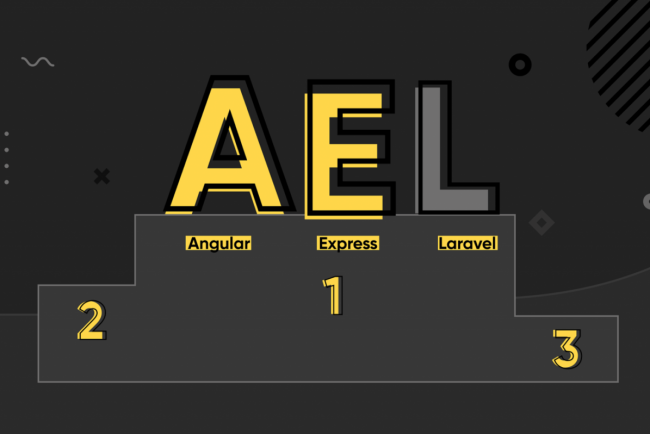
10 Most Popular Web Development Frameworks
In this article, you’ll find out what are web development frameworks, how they compare, and which are the most popular ones. Without further ado, let’s dive into the article right away! What Are Web Development Frameworks? Frameworks have been designed to help programmers with coding […]
BusinessIn this article, you’ll find out what are web development frameworks, how they compare, and which are the most popular ones. Without further ado, let’s dive into the article right away!
What Are Web Development Frameworks?
Frameworks have been designed to help programmers with coding websites, applications, and more. Each of them is a platform that includes modules, libraries, or tools, all pre-made and waiting for use. They can not only save time for web developers but also save money. Using frameworks contributes to faster web applications deployment and overall security of the application.
Of course, it doesn’t mean that you have to follow the framework blindly and leave everything as is. You can alter the details and adjust the web development frameworks to your needs.
Frameworks can be divided into two categories: frontend and backend. Each of them has different responsibilities, i.e. the former takes care of the user interface of the web application, along with the user experience, local storage, communication with backend, assets, and even more, whereas the latter does all the calculations, data processing, business logic and operations triggered by the requests.
Most Popular Web Development Frameworks
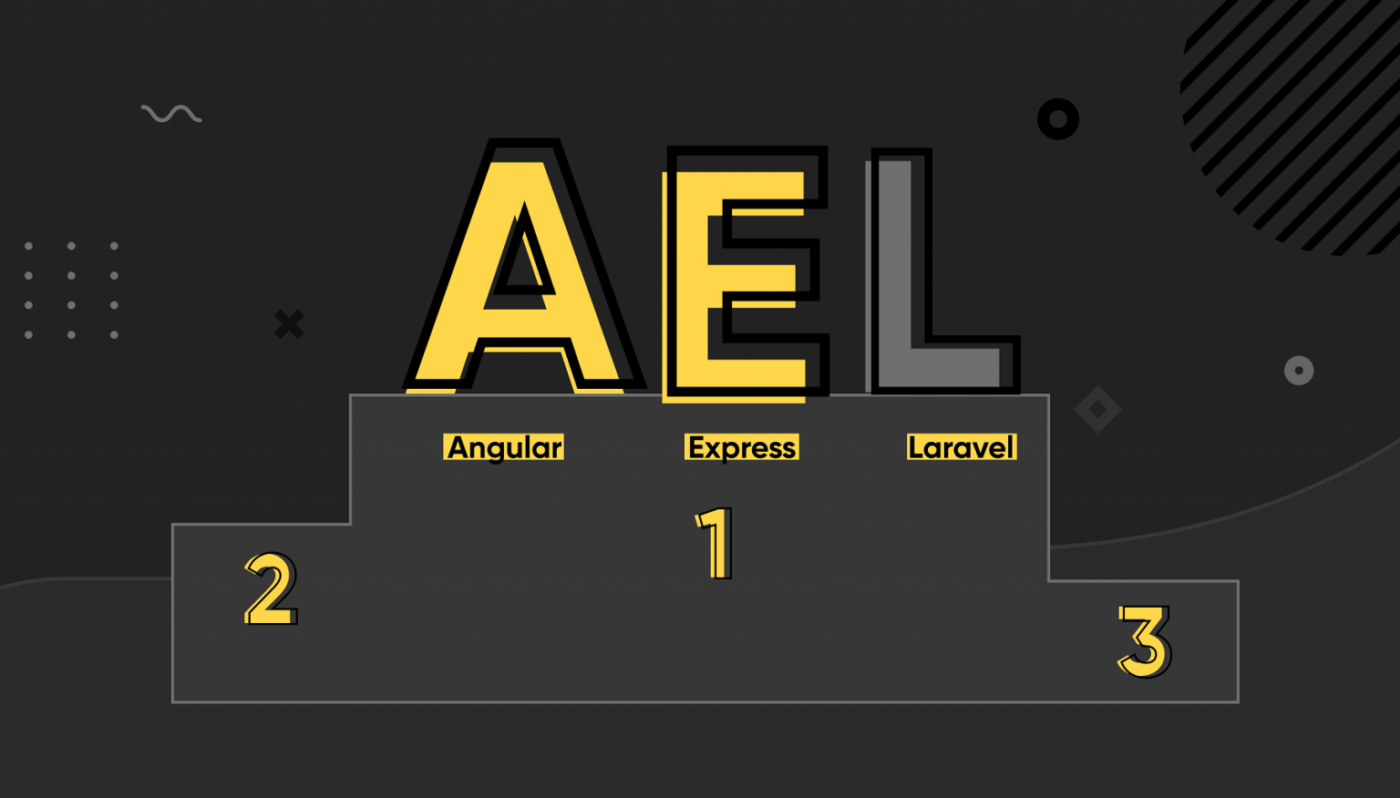
There are plenty of frameworks out there that you can use for your web applications. The question is which one will suit your needs? For your convenience, we’ve prepared a list of the 10 best web development frameworks that we’re going to take a closer look at!
Backend Web Development Frameworks
Before we proceed to listing backend web frameworks, let’s briefly explain what backend actually is. Let’s say that you launch your browser, type in your favorite website and browse through it. Things that you do on the website like clicking on the blog, scrolling through posts, or checking out categories, are done at the frontend, whereas every calculation, running the scripts, accessing data, is done in the backend which is responsible for all these processes. Everything that happens in the backend is basically like John Cena because you can’t see it.
Now that we’ve gotten that out of the way, we’re finally ready to dive into the backend web frameworks, also known as server-side web development frameworks.
Ruby on Rails

Based on the MVC architecture, Ruby on Rails – sometimes referred to as Rails or RoR – is an open-source web development framework. As the name itself suggests, the framework has been written in the Ruby programming language. Many users have decided on Ruby on Rails, as it features simple syntax and high-performance. Though Rails was created 16 years ago, it’s still loved by the developers to this day.
RoR has a feature that is called “assumptions”. What it essentially does is making suggestions about the best ways to write the project. By doing so, Ruby on Rails aims to boost user’s productivity.
Additionally, you should remember that Ruby on Rails web application framework operates with two major principles in mind. The first being the DRY methodology, which states that you should not repeat yourself while working on the code. The second principle is the “convention over configuration”. In other words, the previously mentioned assumptions.
Being such a popular web application framework, it’s no surprise that plenty of big brands use it. Shopify, Hulu, or Airbnb are just among many other brands that use Ruby on Rails.
Express

Written in JavaScript, Express is an open-source, robust framework that’s widely used by users all around the world. Based on Node.js, the framework was flexible enough to win the coders’ hearts as it’s one of the most used frameworks for building web applications.
What’s worth noting is that JavaScript was initially a client-side programming language running in the browser. Its use in the backend can be attributed to Node.js that allowed JS to be used on the server-side.
Not only that, Express also contributes to the easy and fast creation of various APIs. API is an abbreviation for Application Programming Interface. Essentially, its task is to allow communication between two apps.
When your application grows larger and larger, it becomes convoluted and more complex. A logical and wise way to handle it would be to break up the application into microservice architectures in Node.js that would untangle and divide the specific sections of the app. It allows the developer to work on different sections of the application independently, without risking that it would ruin the entire program.
To code microservice architecture you can use a programming language or a framework. In the latter case, Express could be an ideal choice.
Coming back to Express, this popular web framework is not only appreciated by the regular users, but it’s also used by some of the biggest companies like Uber, NASA, LinkedIn, or Netflix, and these are just a few companies among many that do so.
Laravel

Based on the MVC (Model-View-Controller) architectural pattern and Symfony, Laravel is appreciated by many users as it’s the most popular open-source PHP development tool. Even though rookies may find it difficult to understand at first due to the framework’s heavy documentation, once you get to know it, it becomes much clearer.
Known for its simple, yet elegant syntax, Laravel comes with an out-of-the-box API. The framework aims to make programming an easier and more pleasant experience, while at the same time allowing you to create large-scale web projects. Unfortunately, performance-wise, it loses to frameworks such as Django or Express.
Additionally, Laravel includes a feature that’s called packages. What they do is help the developer complete the project in a faster and more efficient way. Instead of coding certain features, the developer can use pre-made packages. Different packages are responsible for different functionalities, for example, if your application requires user verification, instead of coding it from scratch, you can use the package that’s responsible for it. Thanks to these packages, Laravel has a lower entry threshold.
Since the Laravel PHP framework is so popular, here are just a few companies that use it: Pfizer, BBC, or 9GAG.
Django

Yet another server-side web framework, Django is a Python-based tool that offers secure and safe solutions for building web applications. What’s worth noting is that Django works on both Windows and Linux, making it a multi-platform framework. It’s also based on the MVT (Model-View-Template) architectural pattern and includes Object-Relational Mapping which helps access sessions, databases, and more.
Django is a very versatile web development framework, as it can be used for programming almost any kind of website, starting from social media, through blogs, to news sites or wikis, and can work with every client-side framework. Additionally, Django follows Python’s philosophy of batteries included which means additional features and tools.
Django web framework is used by many known companies, among them, you can find brands such as YouTube, Instagram, Spotify, or DropBox.
Spring

Being one of the most popular Java backend frameworks, Spring works based on the MVC architectural pattern. It can attribute its popularity to flexibility, security, and community support.
Thanks to Spring being modular, you can choose which parts of the framework you would like to use. Some of the framework features include transaction management, Inversion of Control, or Dependency Injection. Thanks to them a developer can deliver great web services to end-users.
In its more complex forms, Spring is often used in corporate environments or in large projects.
Spring Java framework is used by various brands and institutions, from stores like Zalando to universities like MIT.
Frontend Web Development Frameworks
Since we’re now done with listing backend development frameworks, let’s give client-side frameworks a go! In frontend, the programmers work their magic to turn the code into a visible and pleasant web apps UI. The major difference between the frontend frameworks and backend is that the client-side is concerned with the user interface and user experience on the website, whereas the backend relates to the server-side.
That being said, let’s now focus on the frontend web frameworks.
React

Although React is categorized as an open-source library, it serves the purpose of a framework. Along with its large supporting community and a plethora of plugins, React is widely used among developers. When used with extensions like Create React App, Material UI, or Redux, React becomes a great and robust framework, even though it’s a frontend library.
It was developed by Facebook in 2013 and is maintained by it to this day. What’s worth mentioning is that React has a cross-platform twin known as React Native. It’s widely used in mobile application development.
Since React is Facebook’s framework, it’s pretty obvious that it’s one of the companies that use it. Among others, you can find brands like Skype, Salesforce, Pinterest, and more.
According to a survey conducted by Stack Overflow, React was one of the most loved web frameworks on the entire market in 2020. The same result seems to be confirmed by a survey conducted by Tsh.io.
Besides, you’ll definitely get a thumbs up from Mark Zuckerberg if you like and use React.
Angular

Angular is definitely a popular framework for delivering advanced web apps based on TypeScript. Created by Google in 2016, Angular is a flexible and reliable framework, often used for developing web applications.
One of the best features of the framework is the Command Line Interface that allows the user to generate parts of the code instead of creating them by hand during the development process. Even though Angular is not SEO-friendly, it can still be tweaked for SEO optimization.
Angular wouldn’t be a recommended option for those who wish to release the MVP unless you’re certain that you’d like to use it.
Originally, Angular was written in JavaScript but don’t let that fact misguide you. Indeed, it was based on JavaScript at first, though later it was rewritten from scratch in the TypeScript language that is fully compliant with its predecessor.
But who exactly uses Angular? Well, here are some of the many companies that use Angular in their web development: Samsung, PayPal, Forbes, or Gmail.
Vue

Similarly to Angular, Vue was based on JavaScript but rewritten in TypeScript. However, the similarities to other web application frameworks will most likely end here. Vue web framework has been created as an individual project and in time evolved into what it is today.
A big advantage of Vue is that it’s progressive, which means that even if you started your development process with a different framework, you can still use Vue on another part of the project. Due to Vue being a reactive framework, any changes made during the development will be visible in DOM – Document Object Model.
Although not supported by Facebook or Google, Vue is still one of the most popular frameworks. It’s the lightest and fastest out of the big three, i.e. Angular, Vue, and React. All these things make Vue an ideal choice for single-page apps.
Vue is also chosen by a large variety of leading companies, among them you can find brands such as Apple, Google, BMW, or Nintendo.
Svelte

Imagine you’re on a trail – hiking, or sitting on the beach near the ocean. You take a deep breath of that pure air. Quite refreshing, isn’t it? Now, Svelte is that breath of fresh air but to the Single Page Applications environment.
Designed to be a fast and efficient web development framework, Svelte does things a little bit differently, compared to other popular web frameworks. Typically, frameworks like Angular or Vue use the user’s website to load their own components.
A different thing happens with Svelte, as it compiles the JavaScript in its vanilla version, instead of virtual DOM. It not only makes the performance better but also contributes to the overall developer experience.
Foundation

Designed for use by larger companies, Foundation is one of these frameworks that are harder to grasp. However, that doesn’t change the fact that it’s a great web development framework, ideal for HTML or CSS, or for those who are already experienced with other frameworks.
Developed with responsivity in mind, Foundation is a mix of HTML, JavaScript, and CSS which allows the user to create interesting projects. What’s more, due to Foundation being such a collection, it works well on various platforms, whether it’s desktop, tablet, or especially mobile phones, since the framework focuses on mobile app development.
Since Foundation is not your typical web framework, you might wonder who uses it? Well, for example, Workday or Macy’s!
Framework vs Library – What’s The Difference?

There is a common misconception when it comes to frameworks and libraries, particularly with jQuery. What seems to be the cause of the problem is the “Inversion of Control”, so let’s explain it briefly.
When using a framework, you’re the one that’s being guided. What it means is that a framework is in charge of the flow. It features a set of rules on how you should follow the development. It’s pretty much like driving Tesla, but it’s actually the car driving you.
The opposite situation happens with libraries. When using these web resources, the application flow is in your hands. You decide on what you want to use and how you want to use it. In this case, it’s the other way around, you drive the ol’ American muscle.
Is one better than the other? It all depends on your needs. Sometimes it’s better to use a framework like Angular or Vue if you want to develop a bigger application. On the other hand, when you want to add something to your project, sometimes it’s better to use a library, like jQuery – which we’re gonna dive into right now.
jQuery

Many web developers choose jQuery because it’s fast, reliable, and easy to use. It includes plenty of features that users find appealing, from being fast and easy to learn to make JavaScript programming even simpler. Additionally, with jQuery, you can create dynamic Flash-like animations that can even be viewed on Apple devices.
Many developers choose to start with the jQuery library as it not only features the mentioned animations but can also handle Ajax queries. Additionally, while using jQuery you can refresh one part of the website instead of refreshing the entire platform. To start using it, you only have to add one file with the library to your project and your set!
Taking into consideration everything we mentioned above, jQuery makes a great library for already experienced users. Unfortunately, the same cannot be said when it comes to beginners.
Even though unfriendly towards rookies, jQuery is very popular among big brands such as Twitter, Udemy, Reddit, LinkedIn, and many more.
Key Takeaways
We’ve compared and listed the most popular web frameworks, both for backend and frontend. Now you should have a general overview of the most popular web development frameworks and that should bring you closer to choosing one for yourself and your business logic. If you’re still hesitating and would like to know more, get in touch with us! We’d be happy to help.
Either way, for your convenience, let’s take a quick look at a small recap of the article:
- Web frameworks provide help with the design of the web pages as well as server-side assistance;
- Frontend framework is designed to create an entire User Experience, both visual and technical, like the things you see in the browser, connection to the server, animations, and more;
- If you need a framework that can assist the website on the server-side, pick backend frameworks like Express or Laravel;
- If it’s a slight tweak or addition to your existing project, you can choose a library like jQuery.
Conclusions
And here we are! We went through the most popular web development frameworks, both backend, and frontend, as well as explained a jQuery library. If you’re still hesitant and don’t know which of them are the best web development frameworks for your project, think thoroughly about your goal.
Different things can apply to different ideas, therefore you can choose one of the web frameworks mentioned above, perhaps a library, or even a framework that didn’t make the list. The point is – you should choose one that corresponds to your end goal.
If you feel like we’ve missed something, go ahead and drop us a message. We’d be happy to hear from you!
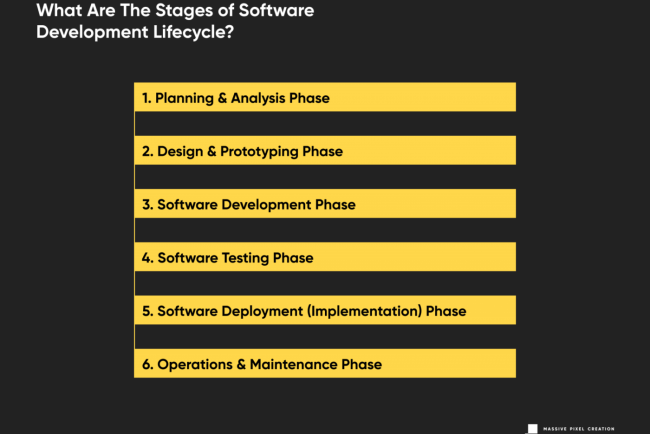
Software Development Lifecycle: The Definitive Guide [FREE]
Software development lifecycle may sound scary or confusing, but in fact, it’s a simple method of delivering software applications. Planning to start a software development project? Then this guide is here to map out your journey towards a successful, working app! In this article, we’ll explain […]
BusinessSoftware development lifecycle may sound scary or confusing, but in fact, it’s a simple method of delivering software applications. Planning to start a software development project? Then this guide is here to map out your journey towards a successful, working app!
In this article, we’ll explain the term “software development lifecycle” and go through its usual stages. We’ll also cover different software development life cycle models so you can get a full overview of the topic.
What Is Software Development Lifecycle?
Software development lifecycle, otherwise known as SDLC for short, is a term used by software houses to name a methodology of delivering high-quality, working software that meets the client’s requirements, deadlines, and budget. Coined in the 1950s and the 1960s, it has become a valuable tool used for thousands of applications for different industries and purposes (follow Techopedia if you want to learn more about the history of SDLC). Currently, its precise standards are covered within the ISO/IEC 12207 international norm defining the tasks required to develop software and maintain it.
A standard development cycle is divided into a couple of phases (more on that below) that define the type of tasks to get done inside them. Each task inside a project life cycle is then assigned and measured upon completion to ensure high-quality software.
Still confused? Think of the software development lifecycle as a roadmap with clear guidelines that take you all the way through the process of software engineering, from planning to maintenance. It’s also there to improve the efficiency of the development team and achieve the ultimate goal of meeting the client’s needs while staying within the budget and deadline.
What Are The Stages of Software Development Lifecycle?
The software development process is usually divided into six to eight steps. Why does that number vary? Depending on the project’s scope and deadline, some project managers may combine steps or omit them altogether. However, this act doesn’t (or shouldn’t) influence the overall quality of the product in any way, so if you hear that your development team wants to do six phases instead of seven, don’t freak out.
Depending on the SDLC model you use, these stages may be repeated as needed. An iterative model (described later in this article), for example, works in sprint-based iterations that go back and forth between the phases multiple times to deliver better results.
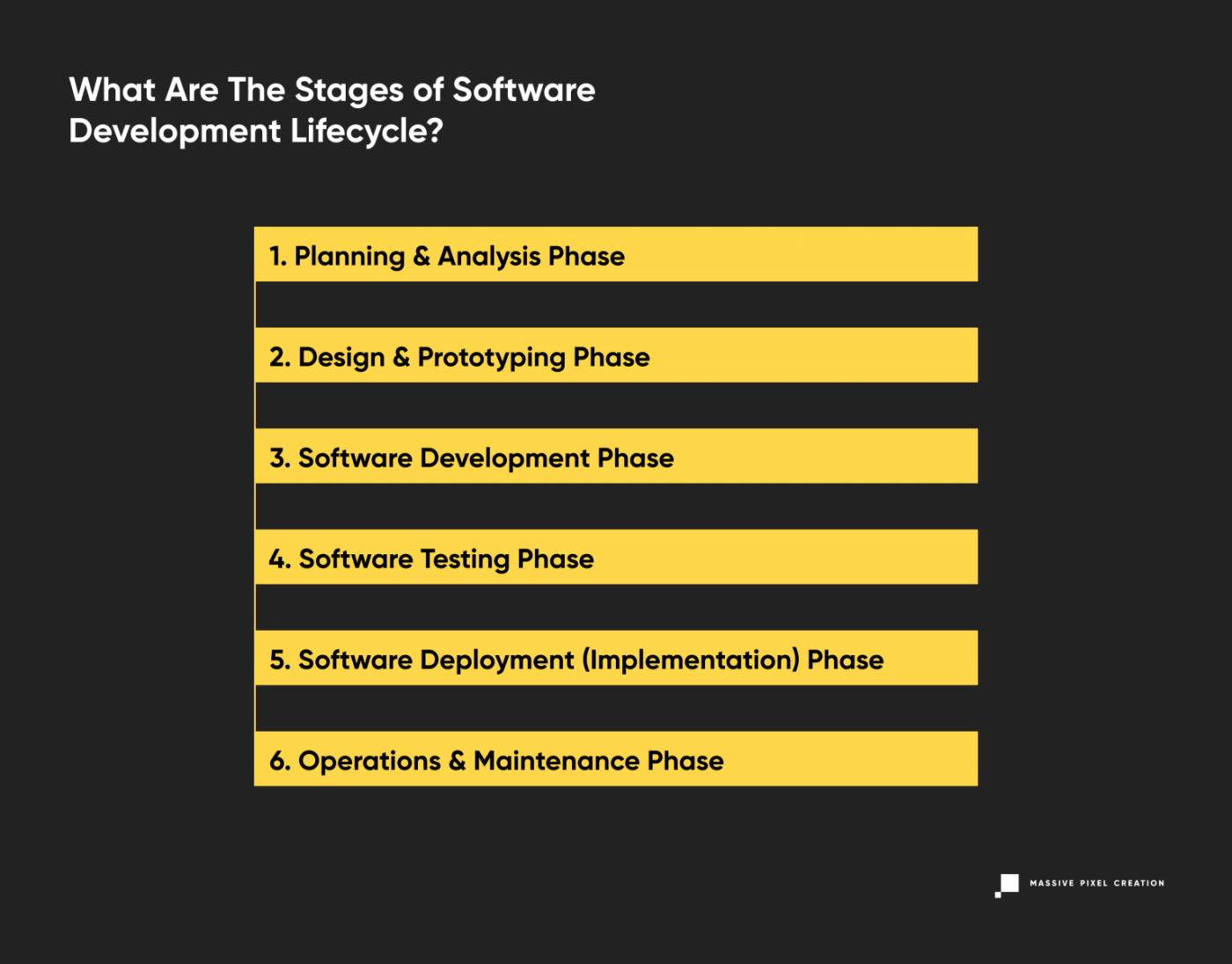
Let’s review the traditional distinct work phases of the entire SDLC process.
1. Planning & Analysis Phase
Careful planning and requirement analysis are crucial in delivering great software. At this stage, the customer works together with the software house team to create a detailed scope of the project and calculate the time and resources needed.
A mutual understanding of the product’s features, benchmarks, and goals can be achieved in a number of ways, including workshops, market surveys, expert consultations, stakeholders’ feedback, and more. At this moment, other guidelines are planned as well, such as quality assurance requirements, risk identification, technical scope, production environment, and others.
The result? The team gets a first insight into their future work, while the customer has a clear view of the product’s scope and expected outcomes. Most models use this stage as a starting point and later adjust the tasks to current needs. Agile methodologies have mastered this process, dividing the development time into short increments that involve a specific scope of work established right before the start.
2. Design & Prototyping Phase
The design phase involves much more than just product designers’ jobs. In software development, it’s equally important to create the visual aspect of the end product (the ‘traditional’ perception of design) and the overall system architecture behind it.
Based on the requirements gathered in the previous stage, the software house team now works on designing the product’s structure, including the communication between the elements, data flow, and optional third-party modules. The architecture is created strictly in line with the software requirement specification as well as the deadline and budget constraints determined earlier.
At the same time, the product design team works on wireframes that act as a reference point for the development team and the client. Some SDLC methodologies use rapid prototyping to achieve optimal results that can later be iterated (more on this later). Wireframes and prototypes help the development teams meet customer expectations and move through development faster. They’re a great way of getting early feedback and delivering an MVP version of the future product. Later on, the MVP may be shaped and changed according to new requirements and details.
3. Software Development Phase
Most likely the longest part of the SDLC process, the software development stage requires the most involvement from the development teams and results in a working product including all the pre-agreed features.
The actual development is performed according to the software requirement specification and the wireframes & guidelines established in the design phase. If it wasn’t done at the requirement analysis phase, the entire development process starts with translating the outcomes of both previous stages into an initial set of assignments. Then, the project manager assigns due dates and work schedules for transparency. As the development proceeds, these assignments may change, as the product is delivered according to current business goals or user feedback.
The team rarely uses just one programming language. Most often, it’s a group of software engineers with various skills and experience (a cross-functional team) using a number of programming tools dedicated for delivering specific results. This approach helps to produce high-quality software that meets all business requirements. On top of that, software houses have a set of their own guidelines, standards, and tools to create software. The development team is also supported by tech leaders, project managers, and other roles that help with any bumps in the road.
4. Software Testing Phase
The code is released into a testing environment. The quality assurance team takes over to look for bugs, omissions, and other red flags inside the software. Once again, they check all features against the customer’s expectations and verify the software requirement specification.
Bugs and defects are a normal part of each development process, so you shouldn’t be alarmed by their presence. The software testing phase is designed to provide the highest possible quality in all fields: that’s why the team takes many different user scenarios under consideration and meticulously checks for all options possible. During this SDLC process, the code will probably go back and forth between the developers and QAs until it’s pixel-perfect, stable, and in line with the business requirements. If it’s meant to be combined with third-party software products, the quality assurance team will check for that as well.

The process of software testing involves all sorts of different tests, both automated and manual, like penetration tests, end-to-end tests, validation tests, and more.
Depending on the chosen SDLC model, the testing phase may occur all at once, after delivering the entire code, or interchangeably, in little increments, as more and more features are added to the software. Agile methodologies will lean towards testing during each sprint or release – more on that below.
5. Software Deployment (Implementation) Phase
It’s time to pop that champagne – the code now meets the pre-agreed software specifications! A completely developed product is ready for release to the market and deployed to the production environment. Larger products will require integrating with pre-existing systems. Developers will take one final look at the implemented system, and may work together with QAs and content writers to produce detailed documentation for it.
This stage also involves arranging an infrastructure that’ll support the new product, establishing the server and hosting provider, and creating a strategy for future deployments with product updates.
6. Operations & Maintenance Phase
The system development process is never finished. With time, unexpected bugs can be detected, upgrades may be needed, and feature enhancements might be in order. As the product is now live, the team may observe performance issues or room for improvement.
It’s wise to monitor and review the network performance, environment’s stability, and the product’s behavior after the release. As the product is moved to the final environment and tested by end-users, it needs to remain stable and fast-running. Taking this step leads to faster problem-solving and issue management in case of any changes or critical issues.
The maintenance phase is crucial to meet the ever-changing business requirements, performance standards, and user expectations. It can involve extra development work or code alterations, as well as QA input.
Other Phases
Like I said at the beginning of this section, it’s impossible to pinpoint exactly one ‘proper’ process of software development life cycle. SDLC is a guide, and depending on the project’s specification, scope, and software organization, the software development company may omit some of the phases, merge, or split them into smaller sections as needed. For example, the analysis phase may be divided into business, technical, and other aspects.
In some SDLC process models, like the Agile method, the phases like development and software testing will concur to ensure rapid application development. In others, like the waterfall model, they’ll happen one after another, linearly.
Software Development Process: The Reality
Still thinking of that roadmap comparison from the section above and wondering how this checks out if there are so many variants? You should know that SDLC is not a plan. It’s a tool that you can adjust to your current needs. A traditional perception of planning is rather stiff and leaves no wiggle room, with steps carefully taken one after the other. Most software development methodologies stay away from that concept, as it can be quite binding and unfruitful.
In the next part of this article, we’ll cover the most popular SDLC models and methodologies and explain the core differences between them.
Software Development Lifecycle Models
The number of methods is nearly infinite when it comes to the models of software development life cycle. SDLC methodology allows for a lot of flexibility, and with new ideas and methods of software development, the struggle with choosing the right provider is real.
In this article, I’ll describe these software application development methods that you’ll most likely stumble across when searching for the company to build your product.
Waterfall Life Cycle Model
Perhaps the earliest of all SDLC models, the waterfall model uses all standard phases of software development, putting an emphasis on the planning stage and detailed documentation. Its traditional perception of product development translates to sequential phases that don’t overlap. You may think of it as a ‘production line’ in a ‘software development factory’, where a part of the product is constructed and then passed on.
This model is easy to understand, plan out, and implement, however, as each phase depends on the execution and delivery of the previous one, the entire project is likely to be overdue.
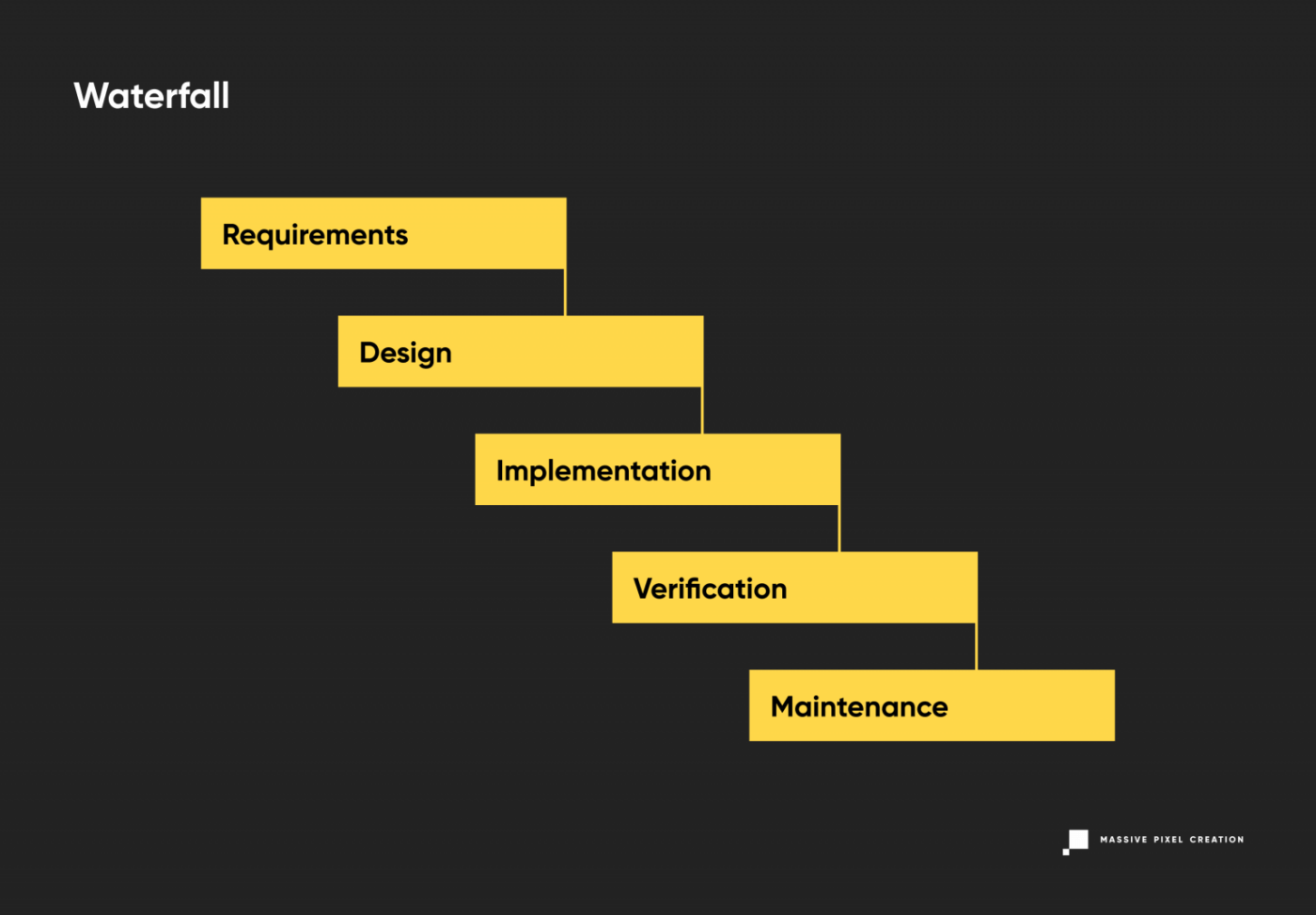
In the waterfall model, the progress flows in one direction and once you put it in motion, there’s a little chance of changing anything as you discover new requirements or constraints to the product. The decision was already made, and the shift will result in missed cost estimates and a ton of work going to waste.
On top of these risks, a significant drawback of the waterfall model is the fact that the end user won’t see a working product, or even a part of it, until very late in the process. This, combined with the high chance of missed deadlines and a long time passing between feasibility analysis and product release (eight to nine months in most scenarios), may result in a software that’s already obsolete when made available to the wide public.
Currently, software houses tend to use modified versions of this methodology, like Sashimi (Waterfall with Overlapping Phases) or Waterfall with Risk Reduction to minimize these uncertainties. Still, these models don’t answer many struggles of modern software development.
Iterative Model
Contrary to the above, there’s not as much emphasis put on preliminary planning in this model of software development life cycle. The SDLC model called Iterative involves breaking a product down into small chunks (iterations) according to the current state of knowledge about the project. All of them go through the standard phases of software development (planning, design phase, software testing, and so on) quickly and are immediately deployed for transparent, tangible results.
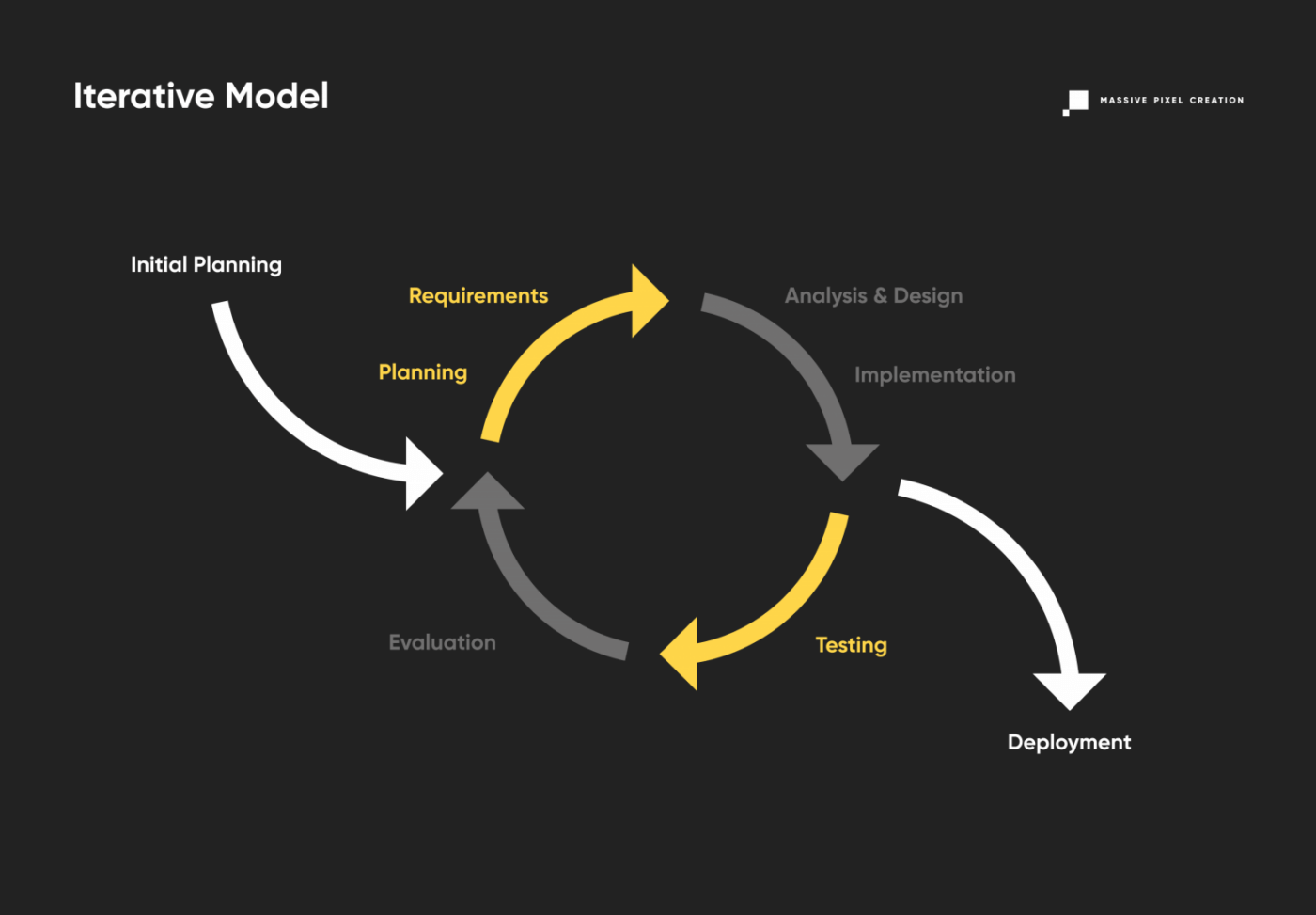
This way, users and clients can pin down the sections that need improvement, and send the product back for the next iteration of development, reducing costs. As the project progresses and more data is discovered, the planning also adjusts to meet new challenges and constraints, working in an iterative manner as well. The iterative SDLC model allows for slight changes to be made during the development, resulting in better market adjustment. Rapid prototyping can enhance client engagement and the feedback process. However, never-ending upgrades to the basic product can eat up resources and lead to out-of-scope software. This can be easily avoided by keeping your roadmap in mind.
Software Prototype Model
Not to be mixed with the iterative model, the software prototype involves fast prototyping of products that don’t have defined requirements. This variant of the software development lifecycle relies heavily on user feedback, as it pretty much construes the scope and details of the project. Therefore, it’s great for high-risk software industry projects with changing business requirements. What’s more, it can lead to huge budget savings, as you invest fewer resources and flaws are easy to locate and fix at an early stage.
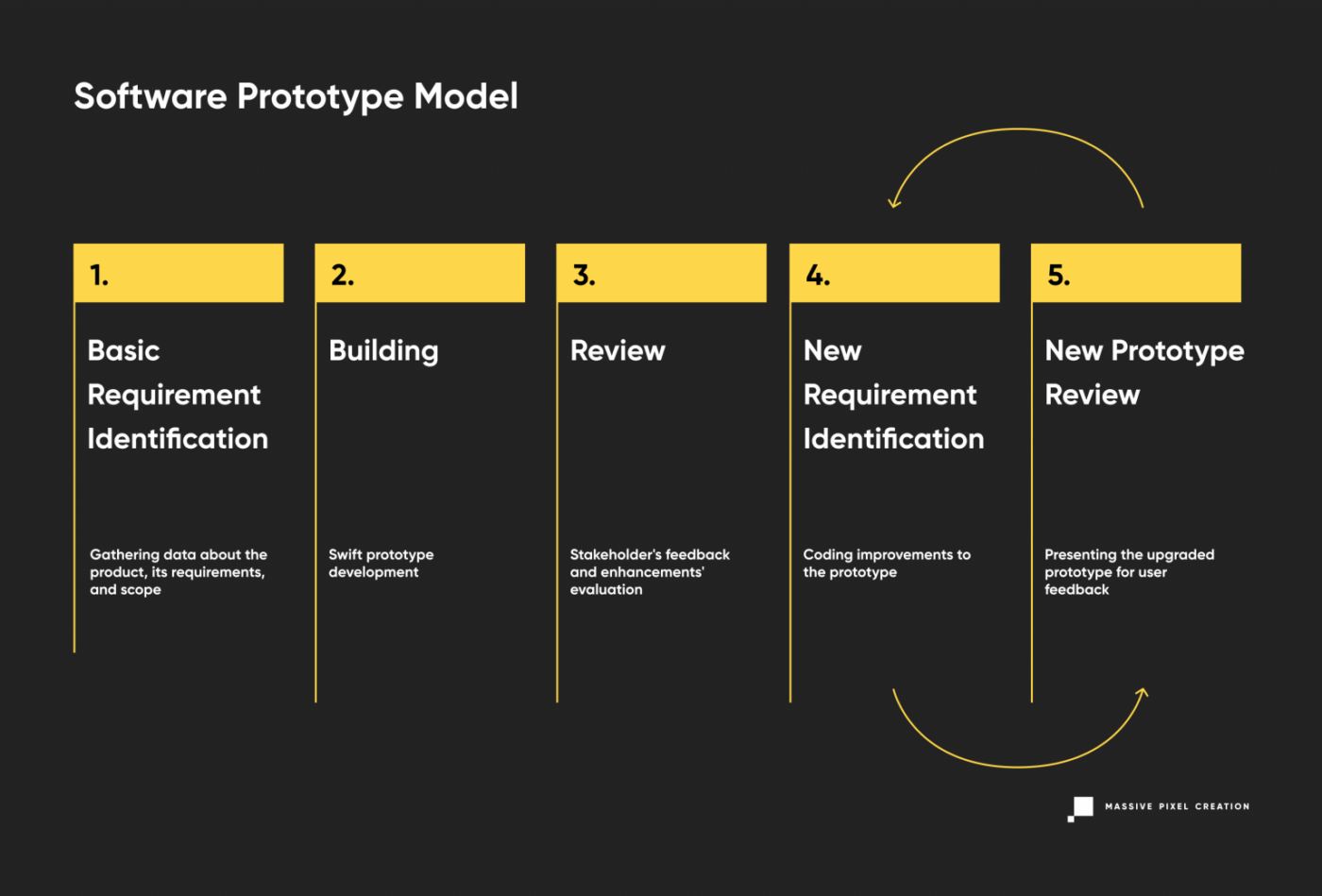
Software Prototype model is often subdivided into three types:
- Rapid prototyping (creating an MVP)
- Evolutionary (adjusting the product according to user feedback)
- Extreme prototyping (developing web applications in stages, starting with a static prototype and then moving on to simulated services and deployment).
However, this approach to software development isn’t risk-free. As the users’ needs can be easily changeable, it may take a long time to complete the ultimate version that pleases the stakeholders.
Spiral Model
The spiral model combines the best features of Waterfall and Prototype models to achieve fast application prototyping and advanced risk analysis. In this case, the team works on preliminary system architecture and design and delivers consecutive prototypes for stakeholders’ evaluation. Once a consensus has been reached, the final prototype is moved to the further stage and through the rest of the development cycles.
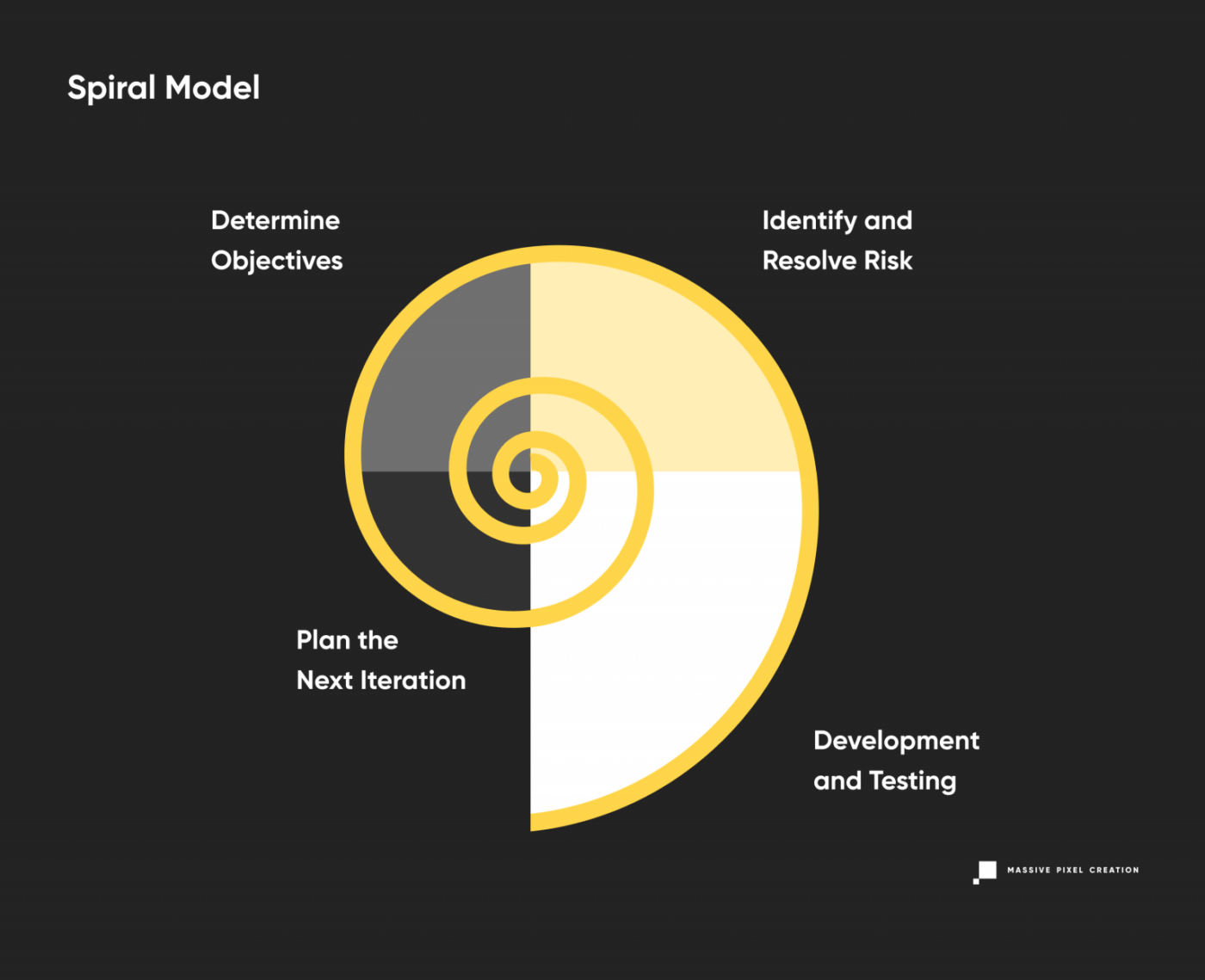
The spiral model enables thorough testing of each step, and even though requirements are set at the beginning, they can easily change with each iteration, reducing the business risk. Extra features may be added as needed, and continuous feedback makes this model more flexible than Waterfall. Still, you need to implement strict procedures to prevent endless spiraling and keep the clear image of the end product in mind.
V-Shaped Model
Yet another variation of the Waterfall model, the V-shaped model follows a parallel structure of tasks while keeping the traditional linear approach to software development. The emphasis is placed on the coextensive verification and validation phase, with coding right in the middle.

The robust validation phase ensures multi-level testing of all aspects of the newly-developed software. This leads to better risk management, however, its linear, disciplined progress makes it tough to introduce necessary changes at later stages. Also, working software shows up quite late in the cycle, so user feedback is harder to obtain.
This model works well for upgrading existing applications, but may not be so great for new projects that still have more question marks than actual, set-in-stone requirements.
Big Bang Model
The Big Bang Model may sound controversial, as its main characteristic is absolutely no planning. Instead, the team codes and tests as soon as they learn new requirements, which gives them a lot of flexibility, but may also bring unexpected changes and results into the project.
The Big Bang model is good for small projects with short (or unknown) deadlines and tiny teams. It works best when the job needs to be done fast, so every hour spent on planning seems like a waste of time.
As this approach can get quite messy, it’s best to use the Big Bang model with experienced, yet flexible team members (a cross-functional team) who can deliver results quickly and work with little to no input from the stakeholders. It’s also great for academic or practice projects.
Agile Life Cycle Model
The buzzword of modern-era software development, Agile methodologies are great for time-sensitive projects requiring a lot of user feedback. As it’s a disciplined process, many companies introduce roles like Scrum Master to ensure a well-organized, goal-oriented development model.
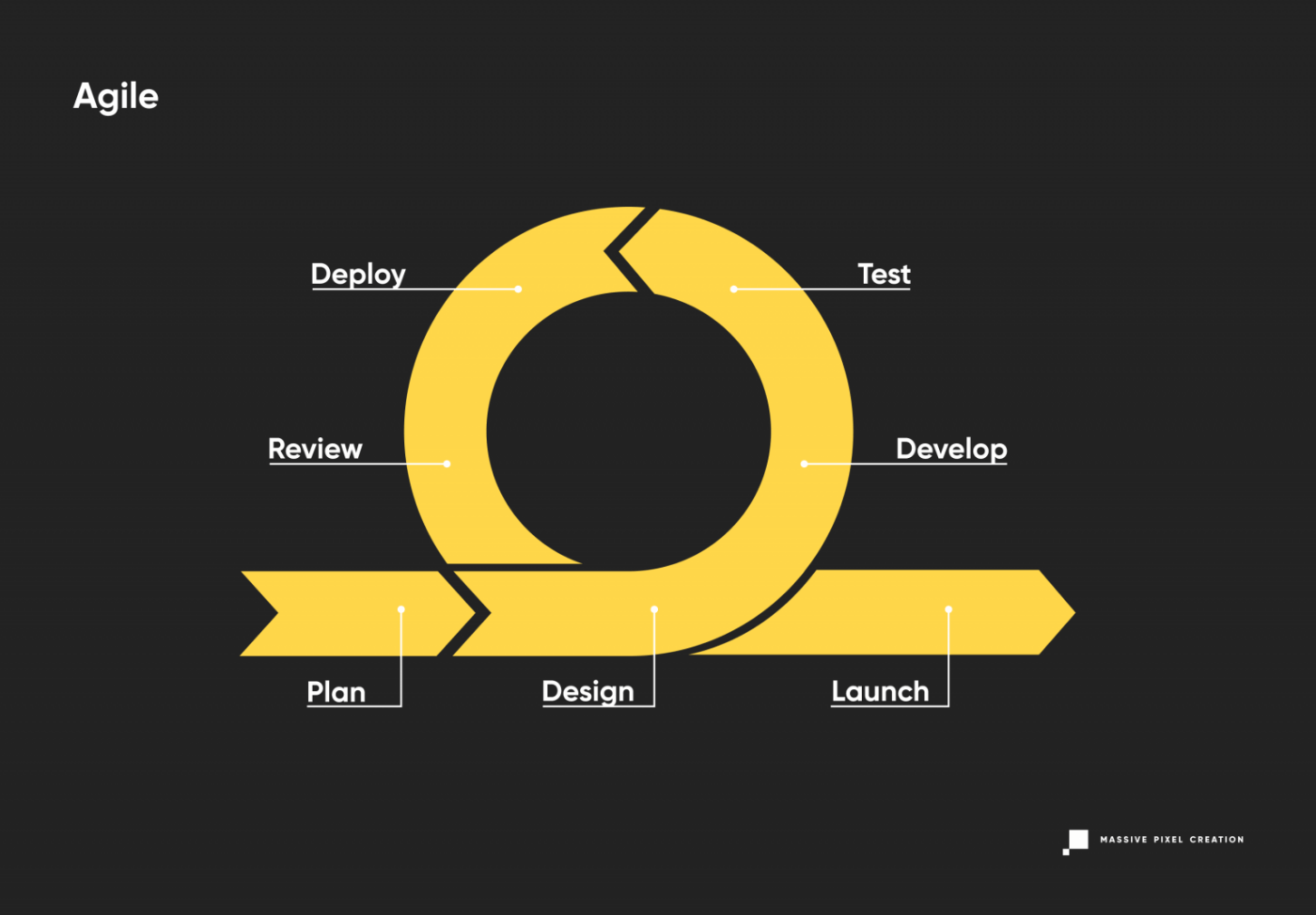
The Agile development model puts the customer first, accepting the inevitability of changes being made mid-project. It combines continuous iterating with robust testing for high quality of the end product and reduced risk; this philosophy divides the project into small sections of work lasting between 1 to 4 weeks.
Usually, if Scrum methodology is also used, each of these periods (called sprints) shares a pattern of kick-off meetings, planning, daily sync, release, and review. This way, the team and the client always have a clear understanding of the upcoming development phase and can adjust the conditions, scope, and process as they go.
The Agile model puts an emphasis on people and interactions between them, caring not only for the result, but also for the dynamics of the team and a clear communication between its members. This is a rare, yet valuable approach that helps to reduce communication gaps, misunderstandings, and time wasted on non-efficient problem reporting. It also ensures constant stakeholder engagement.
Models like XP (Extreme Programming) derive from Agile: XP focuses on the simplicity of development and often mixes the role of a developer and a tester. Another sub-model, Kanban, uses a special visual board to reduce the development time and improve the workflow. This method actually originated in Japanese manufacturing, where visual cues were implemented to prevent inventory pileup.
Other SDLC models
There are many models of software development life cycle. SDLC is a wide concept, and many companies and teams have introduced their own battle-tested methods based on hundreds of software development projects delivered.
Other popular SDLC models are:
- RAD (Rapid Application Development) model, which is similar to the Iterative model, but allows for separate deployment of each iteration;
- Dynamic System Development model, which derives from RAD, but focuses more on user involvement;
- FDD (Feature-Driven Development) model, which is a variant of the Iterative model that bases the project life cycle on features required for the end product;
- DevOps security model, which incorporates the Operations phase into the development loop for instant feedback during the design and implementation stage;
- Lean model, which focuses on easily-changeable software developed efficiently, with less workflow and a smaller budget.
How To Achieve High-Quality Software With SDLC
Regardless of the SDLC model, you choose, introducing some practices to your software development process will help you achieve high-quality results in a timely manner.
Team Communication
Highlighted in the Agile model, this really can’t be overemphasized. Each project will benefit from efficient team communication, as well as the relationship between the team and the customer. Even if you’re not a fan of Scrum or Kanban methodologies, get inspired by the wide pool of soft-skill tools they involve, like daily meetings or retrospective meetings that help solve problems and reduce hold-ups. These have all been battle-tested and bring real value to the project, even if they sound bizarre at first.
Transparency
Make sure that both parties stay on the same page at all times and speak about their expectations during each phase of software development. Let it be simple updates or complicated pivots – this easy rule is a real lifesaver and will cut you loads of extra time spent on fixing bugs and mistakes that weren’t communicated properly.

Continuous Integration
Patching different code snippets at the last minute will almost certainly result in missing deadlines and a lot of stress. Instead, implement continuous deployment and integrate each change into the system as soon as you deliver it to ensure total compatibility and reduce the risk of extra work needed to be done at the last stage.
Version Control
Better safe than sorry! Keep all the code secure and in a single location to prevent any leaks and chaos. Simple security measures such as encrypted Internet connection, logged access, and backup systems can go a long way if something goes wrong. Also, implement a change management system to track individual code input and keep safe, finalized versions of the product separately from unstable ones. Track changes carefully and allow your developers to collaborate on the same codebase.
Fruitful Partnership
Take some time to choose your software development outsourcing company carefully: look through online reviews, testimonials, and portfolios. You can also consider using a video testimonial software to access professional video testimonials – these can provide a more realistic feel for how past clients found their experiences.
Set your own set of expectations towards your partner (including budget and deadlines), and, above all, talk to your candidates!
SDLC: Key Takeaways
SDLC is an excellent way of running, analyzing, and improving the process of developing software. It guides you through all the phases of creating software, from planning to maintenance, and helps you pin down potential problems, hold-ups, and bottlenecks along the way, showing you how to fix them.
The basic SDLC process covers: planning & analysis, design & prototyping, development, testing, deployment, and operations & maintenance.
You can use a variety of models of tested software development life cycle. SDLC models include a traditional Waterfall model and more modern, flexible philosophies such as Agile methodology (with sub-methodologies like Scrum and Kanban that put more structure and detail to the process). Variations like Iterative, Prototype, Spiral, V-Shaped, and Big Bang fall in the middle, as they introduce more space for mid-project changes but are not as adaptable.
Each of these models has a wide portfolio of finished projects. Getting to know them closely will allow you to understand your project’s needs better and make an informed choice.

Software Development Outsourcing Cost: Revealing The Mysterious Side of Budgets
Why Outsource In The First Place? The Earth revolves around the Sun. Hopefully, we can agree on that. Metaphorically though, it certainly revolves around money. That is especially true when it comes to business. Most business decisions are heavily influenced by finances, whom to hire, which […]
BusinessWhy Outsource In The First Place?
The Earth revolves around the Sun. Hopefully, we can agree on that.
Metaphorically though, it certainly revolves around money.
That is especially true when it comes to business. Most business decisions are heavily influenced by finances, whom to hire, which market to move into, or how big of crypto loans you may need to make your ideas come to life. And of course, whether the business itself succeeds or fails is measured by market capitalization. So once again — by money.
It comes as no surprise that business owners look for ways to grow their revenues and limit expenses. And that’s where software outsourcing comes into play.
With software outsourcing — that is, when you employ external software development services to handle any of your projects — you can lower the overall costs of software development and save both time and money. While it also gives you access to global talents, streamlines the processes, and lets you focus on your business’s core strengths, cost–reduction is the reason more often cited (70%), as shown by the 2020 global outsourcing survey.
Can Outsourcing Really Save The Budget?
Doubtful? Then let’s compare the overall costs of hiring an in–house team versus via a software development company.
In–house Software Development
Office Space
Before you can start the hiring process, you have to set up office space for your future employees. The average cost for office space in the US by square foot is between $8–$23, and since the average size of an office in the US is 1,400 square feet, the average price might fall between $11,200–$32,200.
Of course, the total cost of renting space differs across cities and countries. In the US, New York is definitely the most expensive, beaten only by Hong Kong on the global scale, and with Tokyo and London hot on its heels.

Besides putting the desks together with matching chairs, it’s also important to include access to a private kitchen, lounge area, meeting rooms, and most importantly, parking space. Which of course will generate additional costs, but will keep your employees happy in the long–term.
One way of lowering the office space costs is to consider sharing co-working spaces with different businesses, but this might be risky when dealing with sensitive information on a day–to–day basis.
Hardware & Software Infrastructure
When you have space, you need to fill it with hardware and software infrastructure, which may include: computers, programs, subscriptions, servers, and so on, depending on your needs. But you also have to pay for general things as well, such as basic utilities and office supplies, which may need regular maintenance, repair, or even replacement after a few years of use. Should you need to allocate resources, for example, for efficient Kubernetes workloads management, you’ll be in for additional costs.
Hiring And Recruitment
By that point, the office should be ready to welcome new employees onboard. What kind of expenses should you expect?
First, the recruitment. Depending on the process, there might be some costs involved if you’re not doing it on your own — that means hiring recruitment specialists or agencies to help you out in securing the best local developers for your software development project.
In Germany, the average recruitment cost is $5,732, while in the US it’s $4,129, and in the UK — $4,258.
Then come the usual costs that surround the hiring itself. These include the base salary, taxes, insurance, and fringe benefits, from paid sick leave and a retirement plan to access to welfare & recreational facilities, depending on the country.
According to research done by UHY, the international accounting, and consultancy network, the average employment costs on a global scale are now almost 25% of an employee’s salary. The highest costs can be found in Europe, while the lowest are in Canada, Denmark, India, and the US.

Furthermore, due to the impact of the pandemic on the workplace, additional benefits might become a new standard — such as extended remote work opportunities or even child care options. Not mentioning the hand sanitizers and disinfectants which quickly became a necessity used several times every day.
Onboarding, Training, Professional Growth
Next on the list is onboarding. It might be surprising, but the average cost of the onboarding process in a small to medium business is $400 per employee. This includes the offer packs, preparing the necessary equipment, and time spent on bureaucracy and showing the new employee the ropes.
Then it’s time for training. Even if you hire experienced professionals in software development, learning the work culture, understanding the ongoing processes, and getting to know fellow workers will take some time. In some cases, it might even take 1 to 2 years for the employee to become fully productive in the new environment, according to Training Industry Quarterly.
And if you want to retain your employees for that long, offering help in their professional growth — encouraging self–development, providing opportunities for mentorships, and providing access to various courses — may make a difference in turnaround. This way, you show that you care about your employees and that there’s room for their careers to advance. All that though might require additional costs, especially in eventual pay raises that come with higher qualifications.
Losing Money
In some situations, money might be slipping through your fingers without you even realizing it.
With most contracts, you don’t only cover the software development costs themselves, but also all the hours spent in–seat. For example, if your company works on a project–to–project basis, there might be stages in the workflow where your senior software developers or software engineers — or any other employees, take your pick — are not utilized to the fullest extent. Due to circumstances, they might not be even able to work on their tasks, waiting for resources or their teammates’ input first.
And if your employee goes on sick leave or simply on vacation, you have to pay for that as well. Of course, these things are important in the long run for keeping that turnaround low, but it’s something to keep in mind.
There also might be trouble when firing your employees. In some countries, like in Poland, the notice period can last up to 3 months, while in Germany — up to 7, depending on the length of the employment. For the employer, that means they can have a person on board that most probably isn’t as motivated as others to do their work well, which in turn might lead to monetary losses.
How Does The Shadow Of Remote Work Affect The Overall Cost?
During the pandemic, many employees were forced to work from home. In the US, that amounted to 71% of people working remotely in sectors where that was possible, which take up 56% of jobs.
It’s hard to say whether the trend will stay for long, but there’s a chance that telecommuting will prevail in certain sectors, mostly in the IT industry, Finance and Insurance, and Management. This could potentially mean lowered costs in office management, but in return, it requires providing the employees with appropriate hardware and software equipment to comfortably work from home, as well as programs, applications, or even intranet for proper task management. To fully utilize them, you might have to pay for subscriptions or even create your own intranet with the help of a software house, following the example of ib vogt.
Some companies even went one step further during the pandemic, deciding to cover the costs of the internet and telephone for their employees. After that, laws were enacted in certain places — like in ten states of the US — that force employers to reimburse employees for remote work expenses, similarly to the Netherlands, with Poland following their example.
So even though there might be some opportunities to save money in certain places, there might be some expenses in others to balance it out.
Outsourcing Software Development
All of the above doesn’t really apply to outsourcing. You don’t have to care about salaries, benefits, workspace culture, or office maintenance. What are you paying for then, exactly?
Payment Models
The only thing you’ll be invoiced for is the work itself, without having to stress over the little things. Most of the time, outsourcing companies offer two varied ways of payment for their software development services: The Fixed Price Model and the Time and Material Model.
The first one, the Fixed Price Model, assumes that payment will be either invoiced in pre-defined milestones or before and after the project, with the payment split into two parts in different percentages. This model is well–suited for software development services with straightforward and easy-to-predict processes, as well as for those whose goals and requirements are clearly stated and not up to change.
Business owners choose the Time and Material Model when they want their project to be scalable and flexible enough to employ changes throughout the development process or when it’s hard to measure the scope. In this scenario, the only thing you pay for is the time of the development team, as well as for any additional resources required.
Both models ensure that you pay for the output, not the time spent in-seat, and only for that.
So How Much Is That?
There are no universal prices set around the globe for hourly rates of software developers just like there are no set prices for specific projects. Each company sets its own rates, and even infamous, cheap outsourcing destinations, such as India, you can find surprisingly high rates. Just like you can find relatively cheap software development in countries known for being expensive.
Why do the rates differ so much? First and foremost, each country has a different economic situation with varied wages and living standards. Thus, the prices constantly fluctuate, in response to what’s happening on the macro and microscale.
Taking that into account, it’s easy to see how outsourcing can help you save money if you’re smart about it. By analyzing your financial situation and comparing available options, you can gain a lot of value by spending less.
But how much is that, exactly? It really depends on too many factors to clearly measure once and for all, so let’s look at the average rates across the countries and compare them.
Average Hourly Rates Of Software Developers Around The Globe
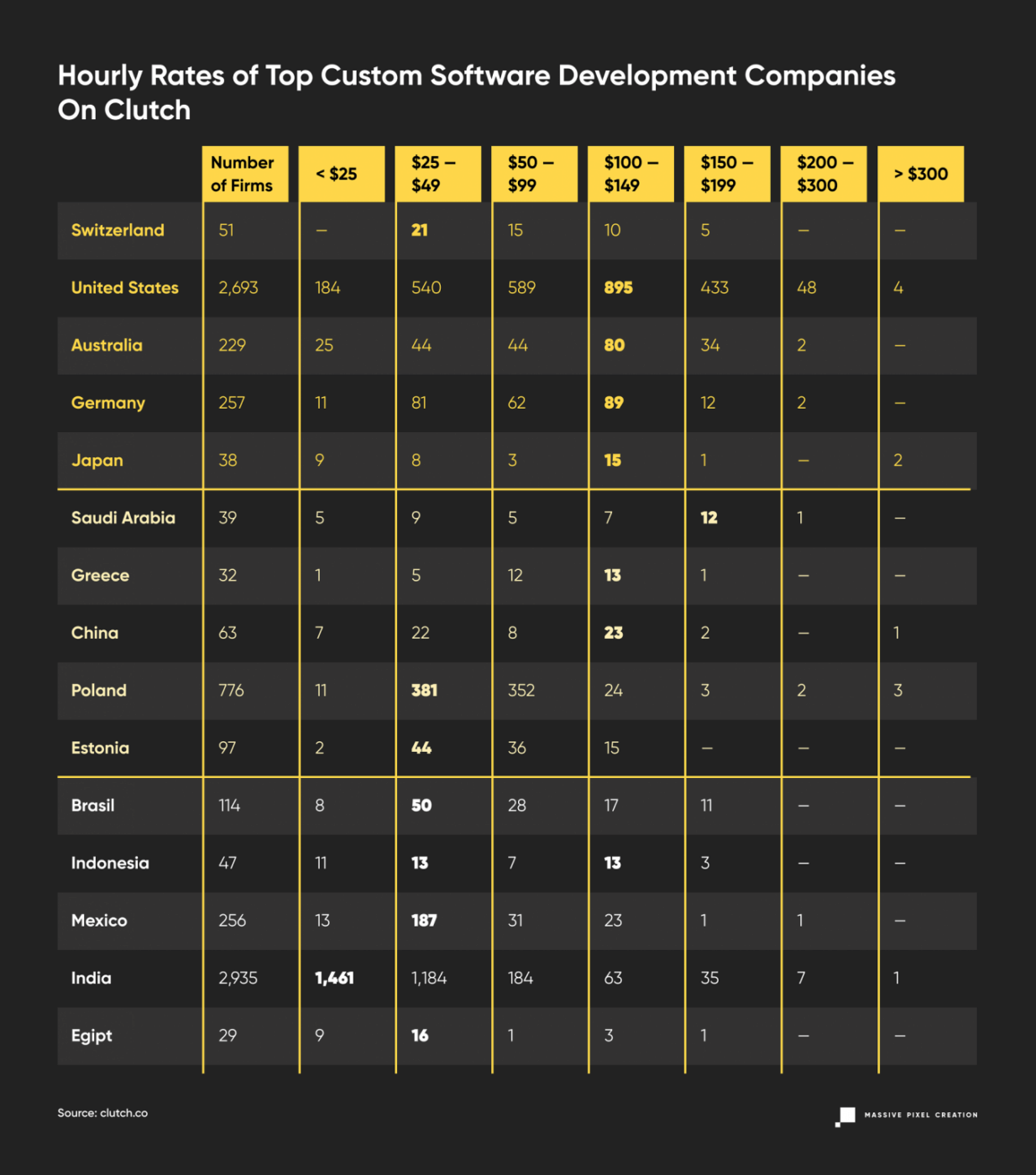
The table above explicitly shows the astounding difference between countries in how much software developers can actually make. But how accurate is that data? It depends on how many people have shared their information about their careers, what industry they worked in, and other factors. It’s also good to keep in mind the effects of the pandemic on the labor market. Currently, with the world struggling to recover from the pandemic, the wages in the majority of countries — like in the US, Italy, Canada or France — have actually risen. And with certain sectors doing better than others, those fighting for great employees might have a higher competition than usual.
To cross-check this information with how the firms price their work, let’s look at Clutch.
As of today, you can find 18,897 firms listed under “Top Custom Software Development Companies”, and only 7,657 post their development rates. Thanks to the easy filtered search, we can quickly check the average hourly rates entered by such companies.
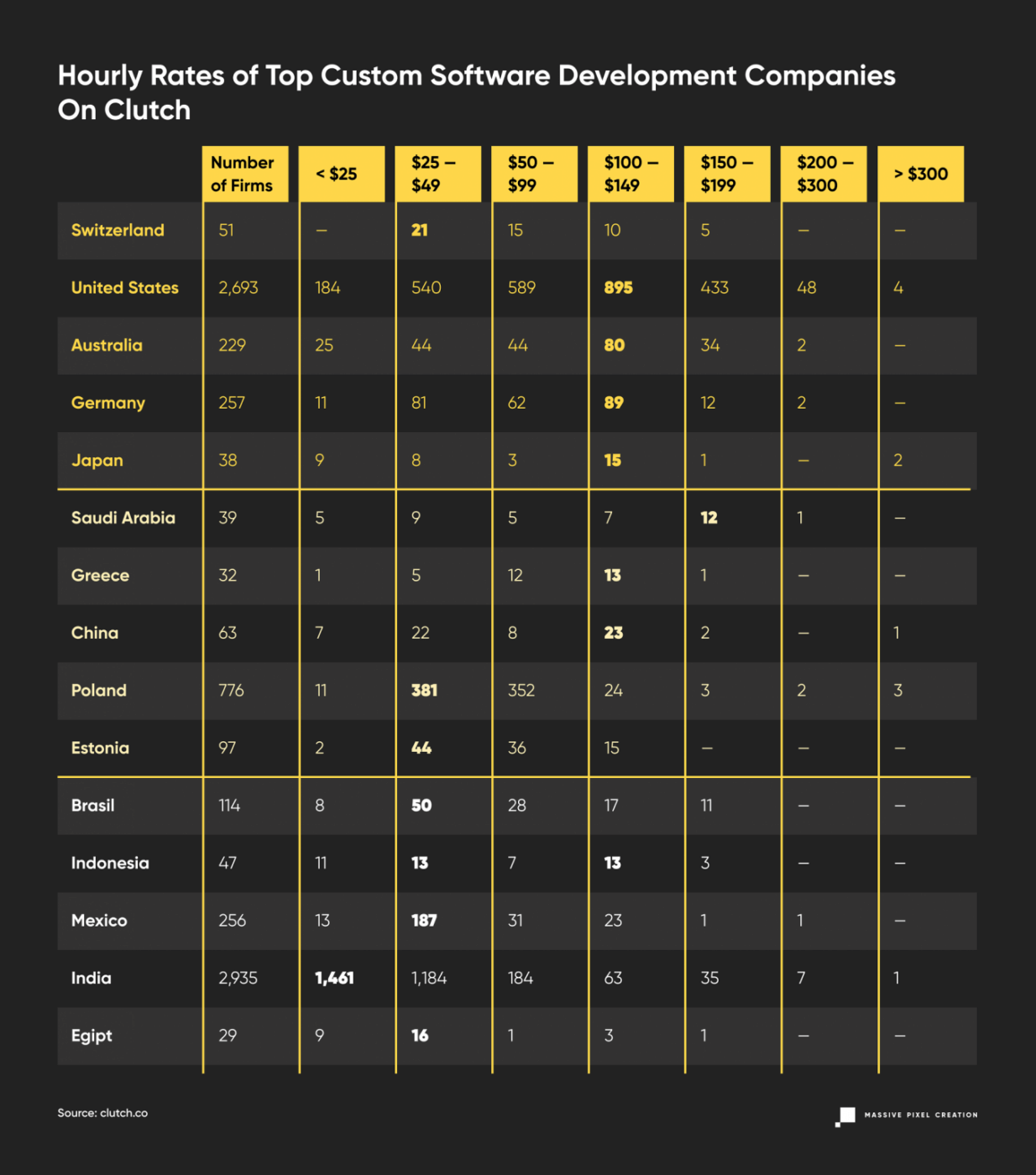
To look at those numbers from a different perspective, let’s see how that translates into percentages.
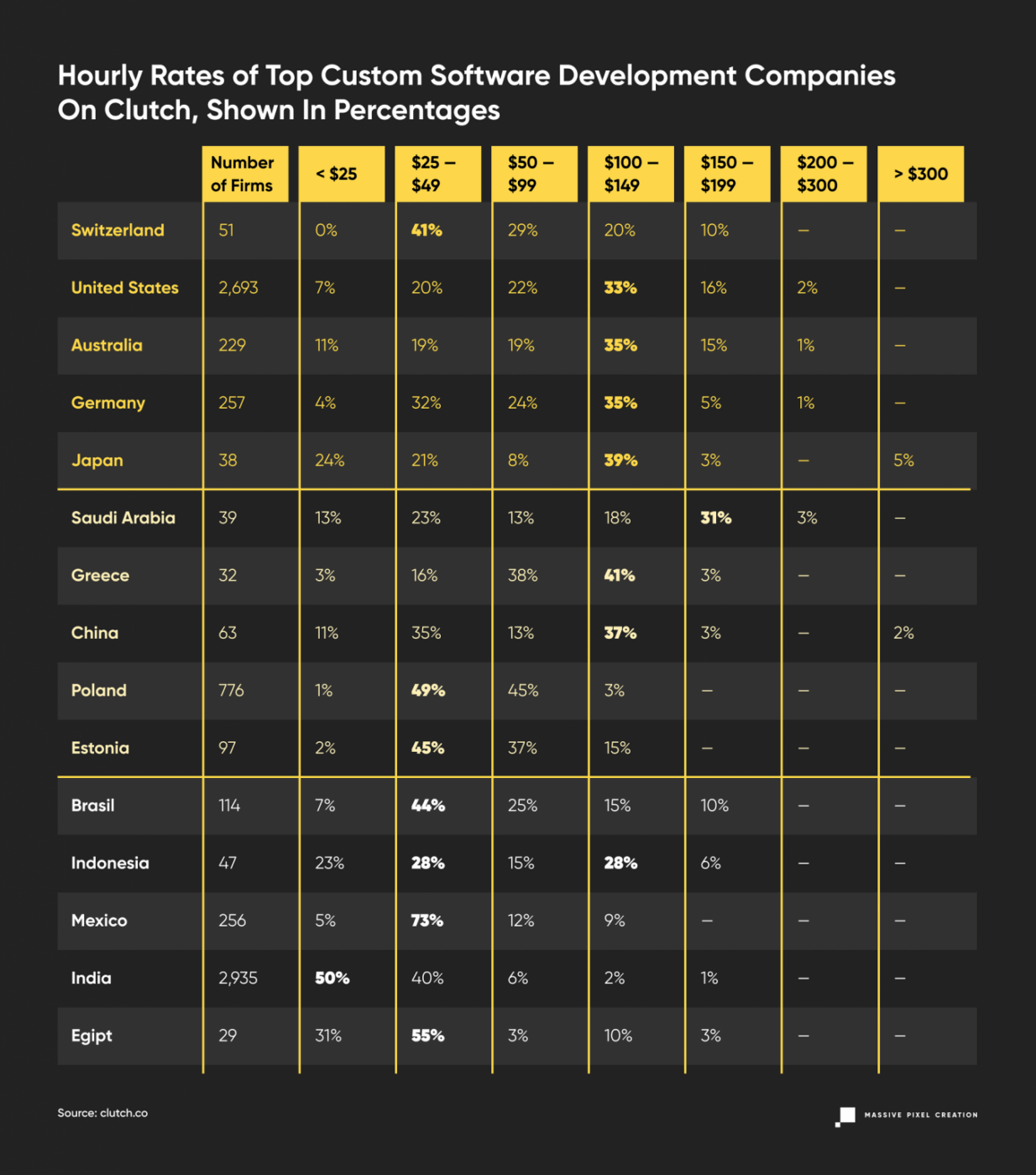
This data shows some correlation with the average rates in the IT services posted above, but it’s still noticeably higher. It does follow the general trends of the outsourcing market: Western Europe, North America, along with Scandinavian countries, fall into the higher pricing ranges when compared to South America, Asia, and Eastern European countries. But even in a famously cheap outsourcing destination such as India, you can find surprisingly high offshore software development rates. How can we explain that?
We can assume that every software development company on Clutch caters to clients from well–developed countries, and thus they can raise their rates accordingly; so that their employees are appropriately compensated and yet stay attractive on the outsourcing market. Many of them present themselves as global software development companies, for whom the time zones and cultural differences are non-existent, providing their IT services to clients from all over the world.
So when you’re hiring offshore developers by average hourly rate, you can expect more than 75% of them to cost less than $99 per hour.
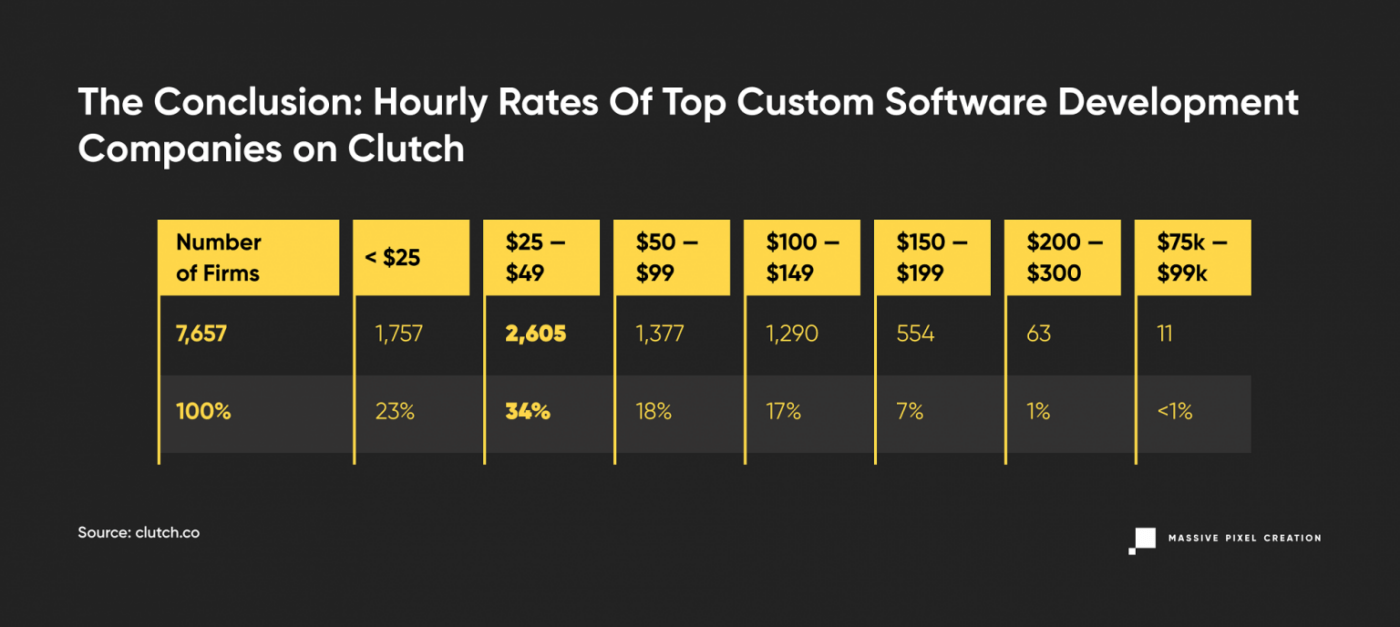

Custom Software Development Cost Per Project
Let’s assume you’re more inclined towards the Fixed–Price Model or you would like to know the final cost. Clutch once again will help us out in our estimations, where you can filter through the software development companies by budget. Let’s see what they set as a minimum price per project.
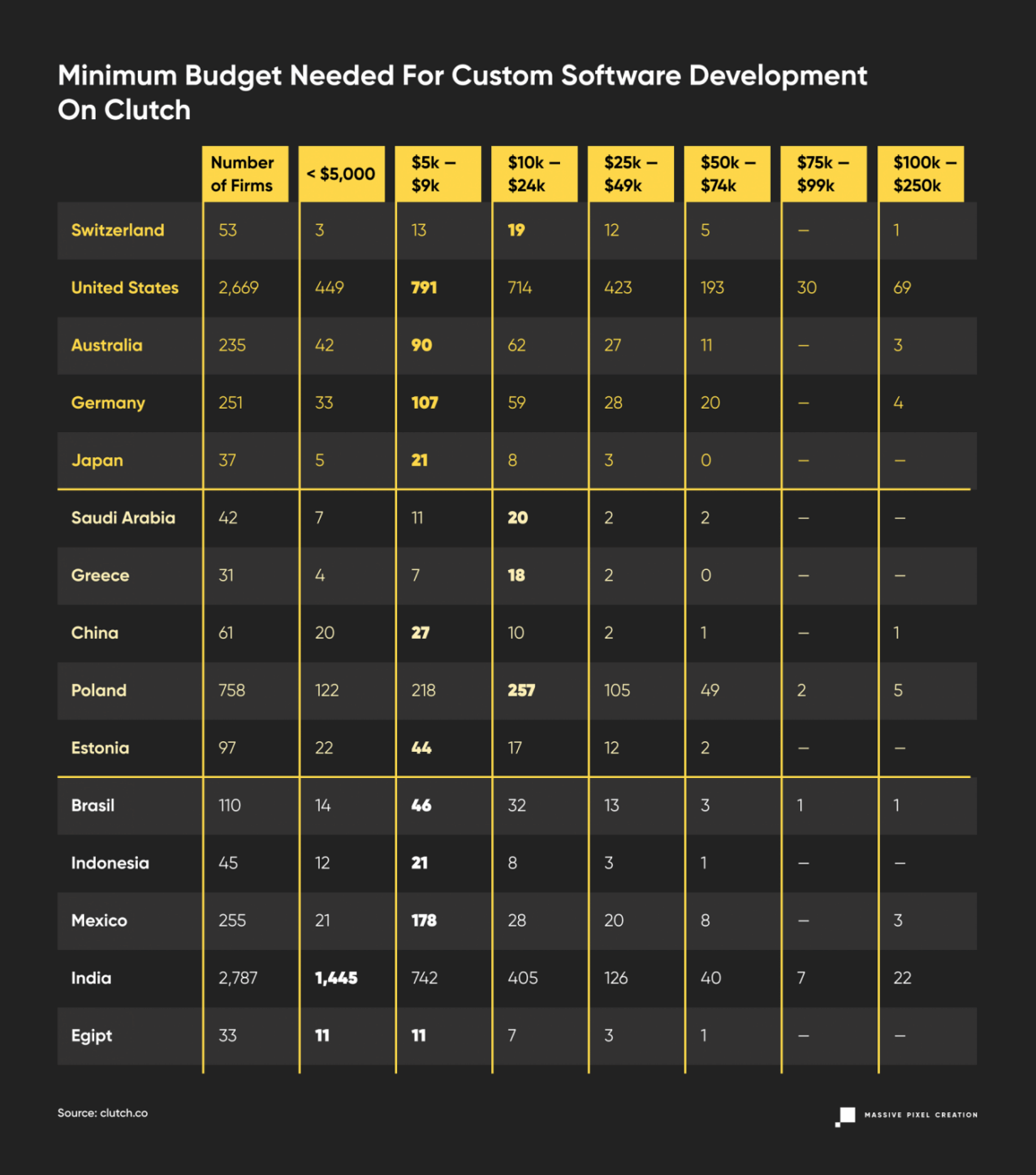
Let’s look at these numbers again, but in percentages.
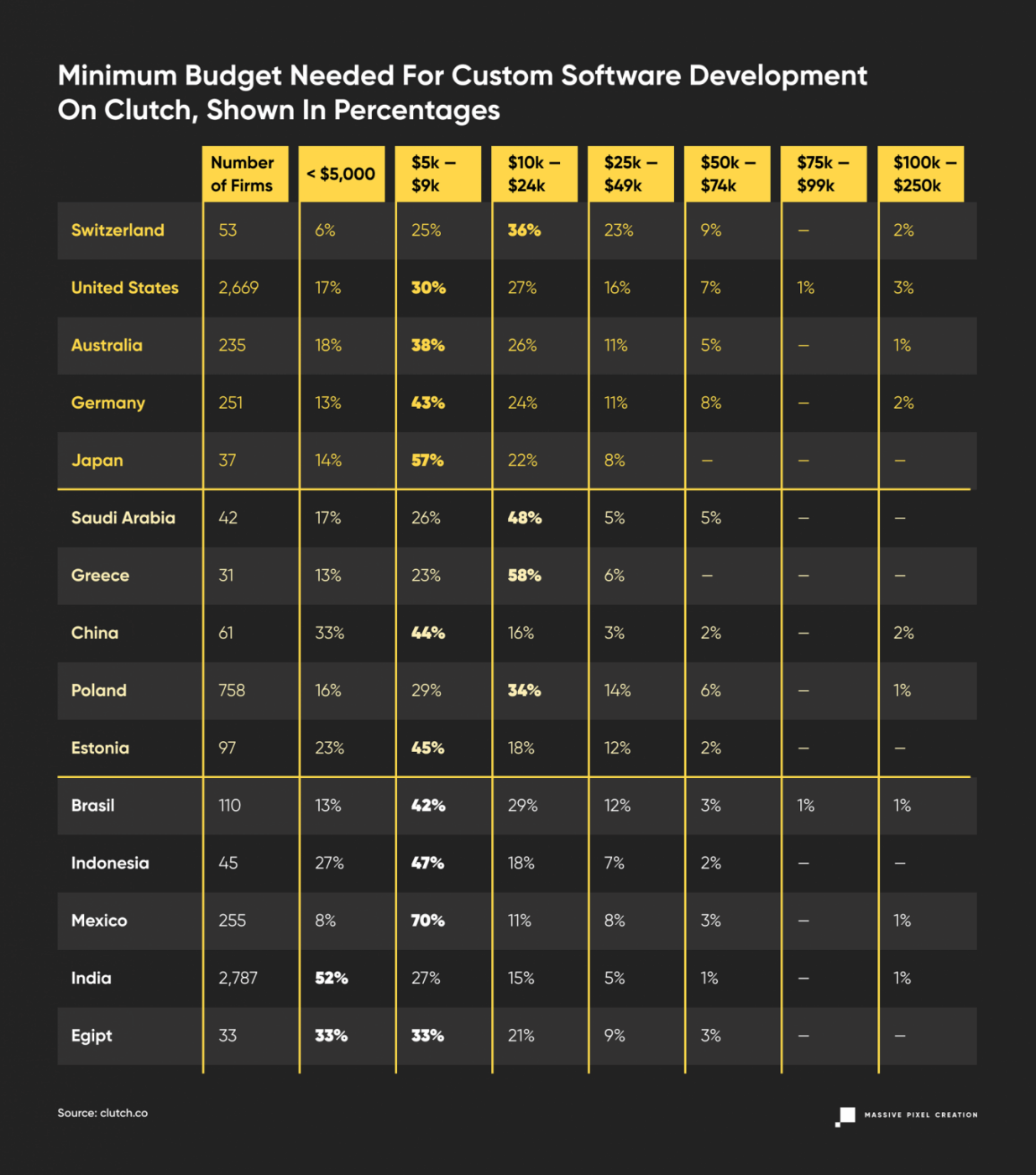
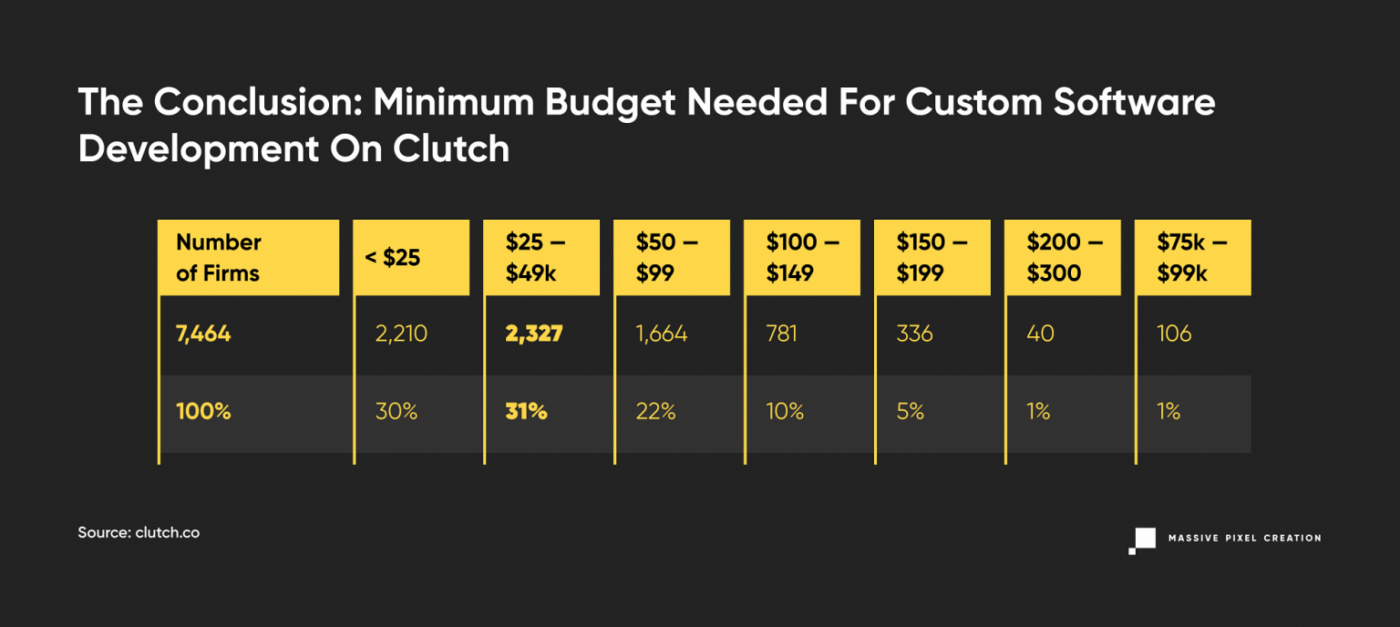

The majority of projects, 33% of them, start with a $5,000 label, while there’s also a big chance of finding options at even cheaper price ranges. And there’s a 83% chance of getting your price estimated below $25,000.
The Conclusion: How much do you have to pay for software development outsourcing?
If you want to hire offshore developers per hour, you can expect 57% of them to cost below $50 and 75% cost below 99$.
If you want to outsource a whole project to a software development company, you have a 61% chance of having to pay less than $10,000, and 83% of paying less than $25,000.
Outsource Software Development with MPC
Taking the above into consideration, pricing at MPC stays at an average level while still providing sustainable quality based on the years of experience in delivering in–house products. And while we’re striving to reach challenging goals, learning how to optimize our work and how we can improve even more our services, we keep in mind our client’s financial restrictions and we respect their decisions influenced by it.
Average rate at MPC stays at $50. It varies depending on the skillset, position, and seniority level. A full stack senior developer with 6 years of experience under his belt will surely be a larger cost than a mid QA engineer. And in this market like any other, the supply and demand will come into play as well. Recently, we’ve noticed a big increase in popularity in JavaScript based technologies, therefore salaries of those specialists increased significantly, resulting in higher hourly rates.
At the same time, the average Fixed–Price project doesn’t require any different budget than what the market usually does. Vast majority of new projects we’re facing are MVP versions of applications that fill in some niche. The amount between $15,000 and $30,000 allows us to provide value to the end user, challenge the idea, and in many cases, even monetize to expand the solution later on.
Key Takeaways
Software development can be done in two ways: in–house, that is with your own team, or by partnering with a software development company that specializes in a niche relevant to your business. Both options come with costs in different areas, so there is no right choice for everyone. It all depends on the circumstances. That’s why each business owner should analyze their own situation first and deduct which software development model is more beneficial and convenient.







